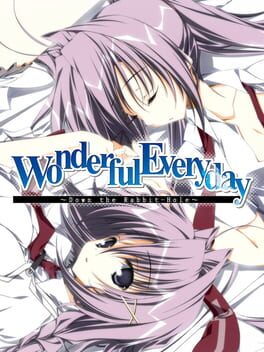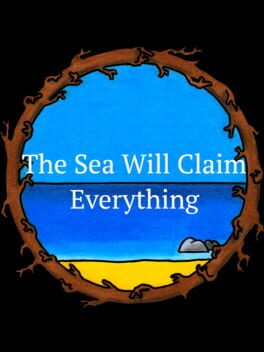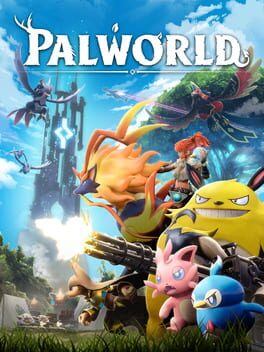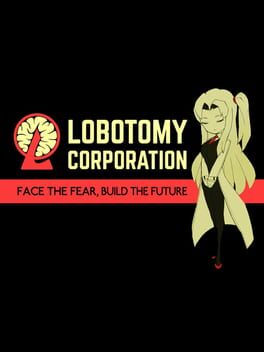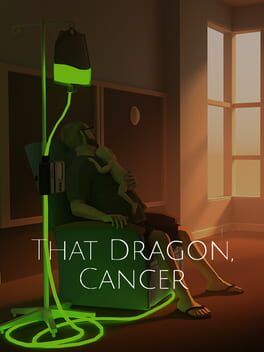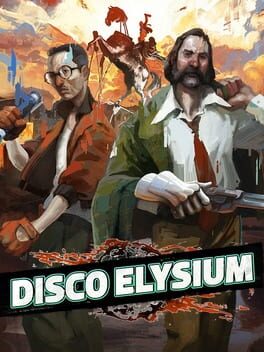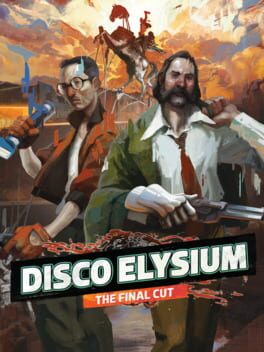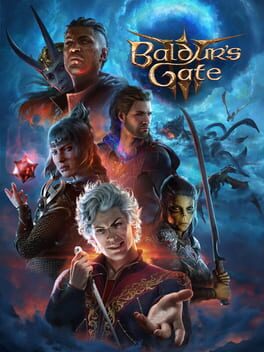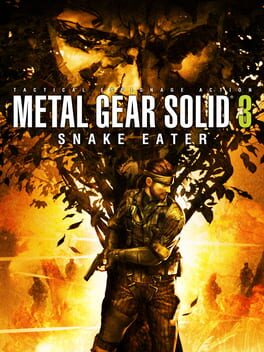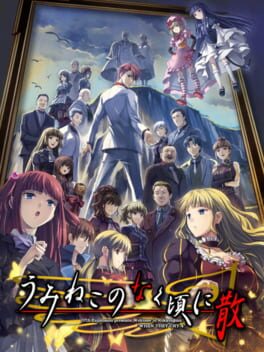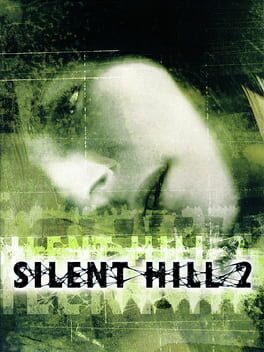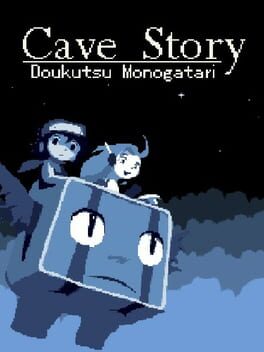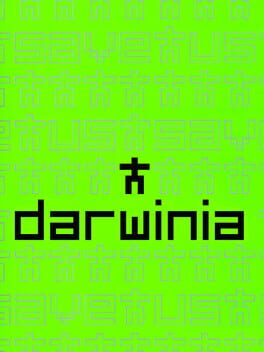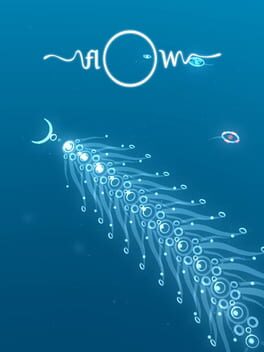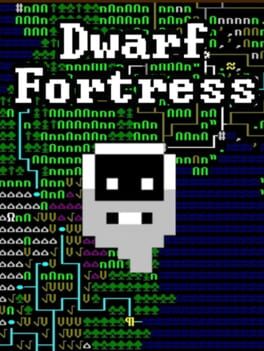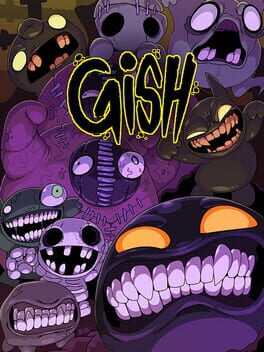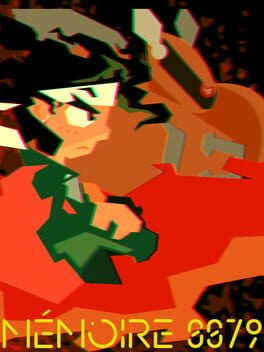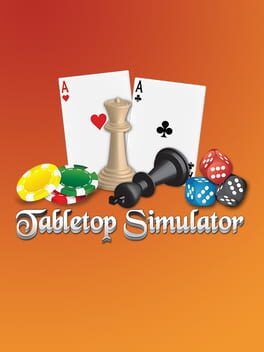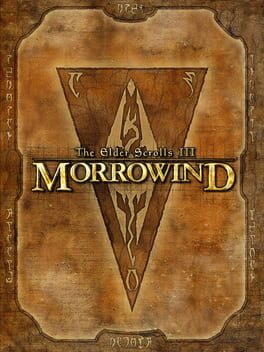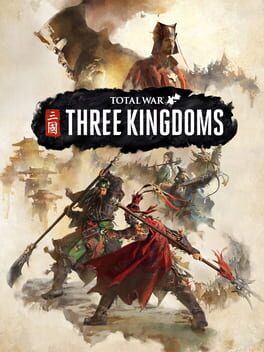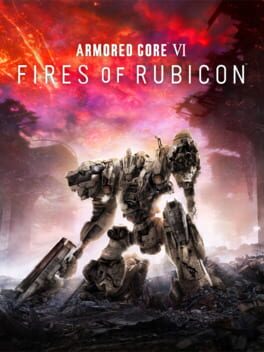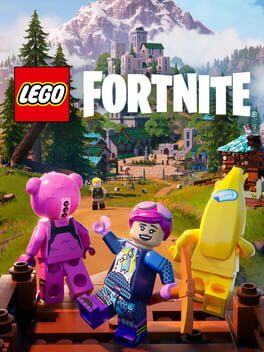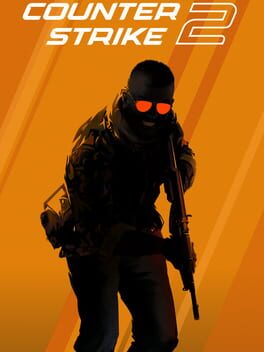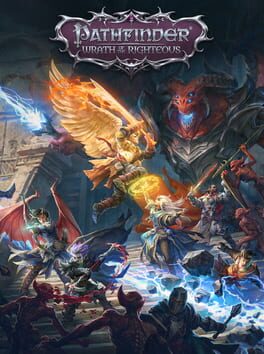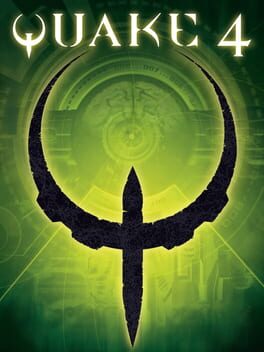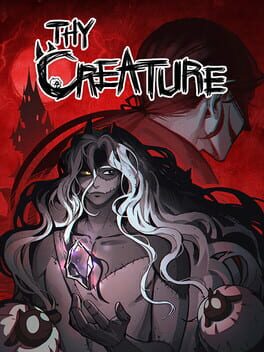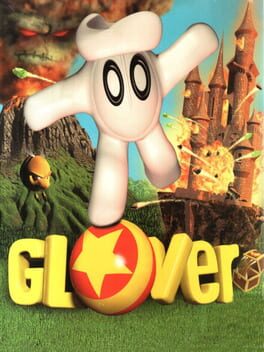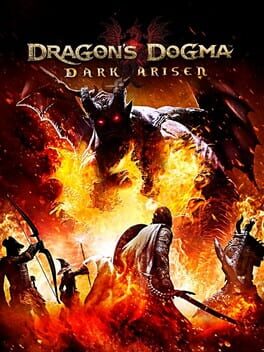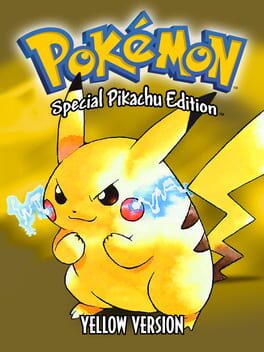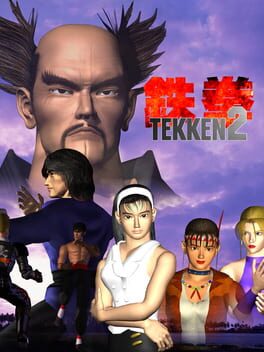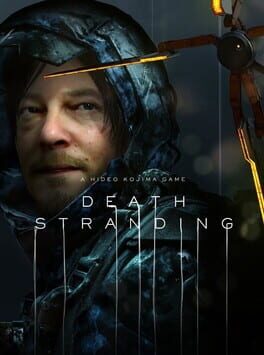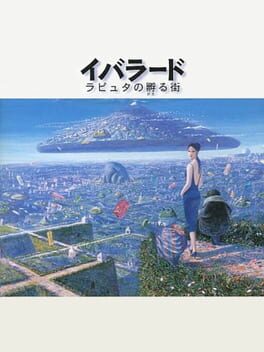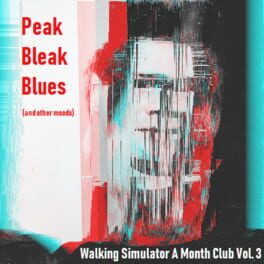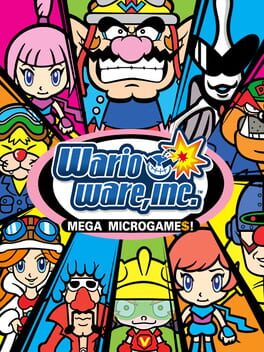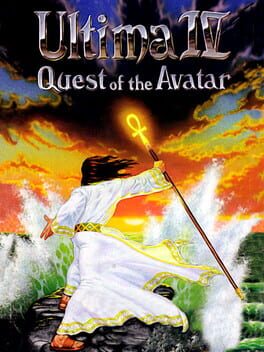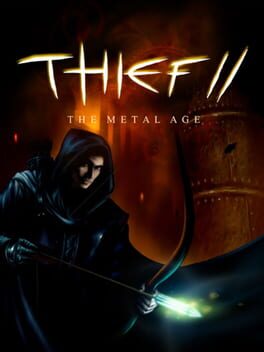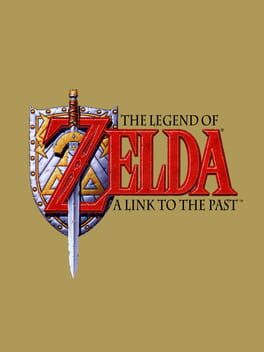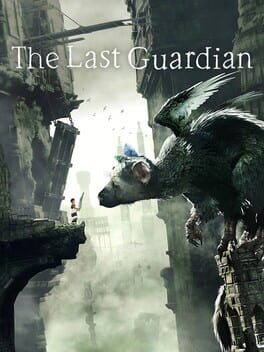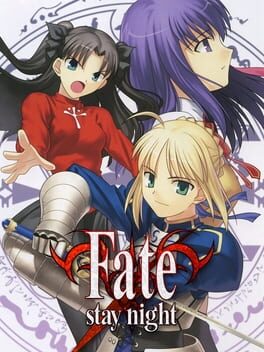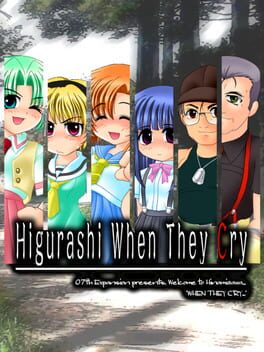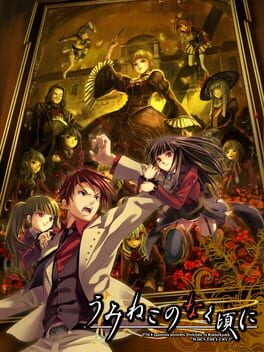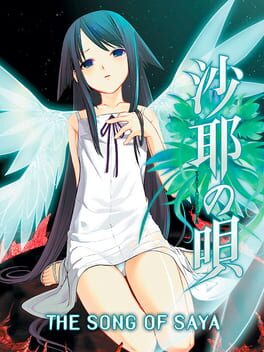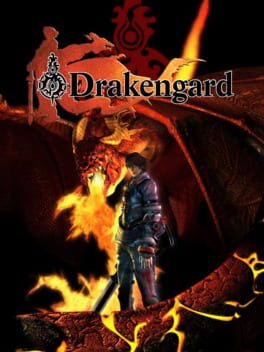akanta
75 reviews liked by akanta
Tsui no Sora
TBD
Author’s note I — I am considering the possibility of opening a YouTube channel and using this script as the basis for a video on Tsui no Sora. If that becomes a reality, I intend to leave this original essay up as long as my Backloggd account is active. Should this interest you as a possibility, please feel free to let me know in the comments. This is my longest work on this site by far, and I sincerely appreciate anyone who reads any length of my work. Thank you so much.
Author’s note II — During the process of writing this piece on Tsui no Sora, which took me over a month of drafting, rewrites, and rearrangement, it has come to pass that mangaka and artist Akira Toriyama has passed away. You will see immediately that Toriyama-sensei’s work has had a profound impact on my art to this day within this very piece as Dragon Quest IV, my favorite video game that he was involved with, is a major talking point within this essay. I simply wish to express my grief and sorrow for the loss of such an incredible force of good and artistic passion in the world, and to thank him for contributing what he did to the greater tapestry of artistry during his active years. Thank you for everything, sensei, and may you rest in paradise.
Author's note III — Of course, a day after releasing this piece I come to notice some errors and additions I wish to make. Thanks to my friends in the small but tight-knit Tsui no Sora community in the West for their feedback and insight. Changes made within will be inserted seamlessly, so no worries to new readers about inaccuracies or loose ends.
==================================================
Die Geburt der Tragödie.
==================================================
Of course, in order to start talking about Tsui no Sora, I need to talk about a completely different game. Last month, one of my favorite role-playing games celebrated its thirty-fourth anniversary. Released for the Famicom on February 11, 1990, Enix’s Dragon Quest IV is deservedly considered one of the most influential and tide-turning games of the 8-bit era. While Dragon Quest III no doubt defined the shape of turn-based role-playing games to come, I would argue that the narrative influences that its sequel planted within not just its genre sphere, but the medium of video games as a whole, is equally as important.
For those unfamiliar with the structure of Dragon Quest IV, the game is told across five chapters, and each of the first four chapters follows the perspective of a different character inhabiting its world. Chapter One sees soldier Ragnar McRyan return abducted children to their parents by slaying a nearby monster, Chapter Three is an entirely removed story about the portly Torneko and his journey to become the world’s greatest merchant, so on and so forth. When the fifth and final chapter begins, the player is finally put in control of Solo, the protagonist featured on the game’s box art. While this chapter too starts off isolated as the others, an amazing development occurs partway through - each of the cast members the player followed in the preceding chapters resolves to join the hero’s party and with them their stories align, turning this fantasy anthology into a cohesively structured narrative, simply taken in across a handful of perspectives before culminating in the climax, in which the “main story” unfurls.
Now, I’m not going to claim that Dragon Quest IV is the first within the gaming medium to tell a story across multiple protagonists’ perspectives like it does - my knowledge of gaming history isn’t so strong - but it’s certainly one of the most important early adopters of the narrative device. Its influence can be felt all across the medium, both in role-playing games like LIVE A LIVE and MOTHER3 and beyond the genre’s confines. The idea of multiple protagonists experiencing their own stories in a revue-style suite of plot points before assimilating into the key narrative has, in the wake of Dragon Quest IV, become a well-trodden and beloved template with which to tell stories in video games… and that’s why I think it’s so interesting that a game like Tsui no Sora breaks that formula down and turns it on its head the way it does.
First, a little context.
Tsui no Sora, also known as Endsky, is the debut title by Japanese doujinsoft studio KeroQ. The entire story was written and directed by the enigmatic co-founder of the circle, SCA-Ji. To discuss any of SCA-Ji’s work properly necessitates two points of knowledge about the guy. The first is that he is incredibly well read - Tsui no Sora and his later work never shies away from directly referencing, analyzing, and arguably providing a narrative adaptation of high-octane writings on philosophy, psychology, mathematics, and meta-physics, as well as a plethora of international fictional literature ranging from children’s stories to thought-provoking and oft-debated works of literary high art. And we’re not talking simple name-drops - SCA-Ji clearly displays an academic understanding and digestion of the topics he chooses to reference in his writing, and one of his greatest gifts as an author lies in his ability to weave these stories, essays, theories and ideologies into his work - not by turning his characters into walking vessels for these concepts, but allowing the themes to embolden his characters, giving further depth to the lives they lead, the feelings they go through, and the ideals they arrive at and clutch onto. The second point of necessary understanding is, as fans and detractors alike will be happy to inform you, that SCA-Ji is unabashedly insane. I don’t mean in the same sort of quirky, “oh, you!” way that people look at Hideo Kojima or Kotaro Uchikoshi - the guy is a true looney. Following SCA-Ji on social media is a game of Russian roulette; sometimes, you get analytical posts about the things he’s reading, thinking about, and playing, sometimes he’s sharing fan art of his characters with huge dicks, sometimes he’s talking about how it’s perfectly normal to do the deed with raw chicken in Japanese supermarkets and vouching for the legitimacy of incest. He’s a gem, and I wouldn’t have the guy any other way. No, like seriously - I think the most compelling thing about SCA-Ji’s presence is the fact that even in the current era of the eroge landscape, he’s still acting like the same perverted weirdo he no doubt was when it was normal to be that type of person in the amateur scene around the time of Tsui no Sora’s release. No matter how one feels about SCA-Ji’s viewpoints and opinions, it’s undeniable that his work is endlessly earnest and entirely his. You can’t fake that, and plenty in the wake of his debut on the scene have tried and failed.
So, back to KeroQ themselves - if you’re looking for a more detailed look at their history, I can’t overlook this awesome video by BaseSk8er about their early days. Highly recommend this channel to anyone interested in eroge history in general, in fact. At the expense of lifting BaseSk8er’s work for my own, I’ll leave further influences on Tsui no Sora to largely be explained elsewhere. That said, it’s undeniable how strong of an influence both the fictional and academic literature SCA-Ji had been taking in at the time, as well as contemporary otaku artwork, particularly GAINAX’s Neon Genesis Evangelion, held on the story, themes, character designs, and imagery. One of the main characters, Takuji Mamiya, even has his design and some personal traits heavily lifted directly from Eva protagonist Shinji Ikari. However, if we’re going to talk about dominant influences and themes within Tsui no Sora, we need to discuss my favorite genre in Japanese media, one essentially dominated by eroge works in representation and although not necessarily birthed within eroge, it certainly found its home within the medium: the urban horror of denpa.
Denpa, which literally translates as “electromagnetic wave”, refers to either a narrative genre or character archetype revolving around those on the fringe of society. Denpa characters operate on a different wavelength than “normal” society; delusional street-wanderers who find fear, paranoia, and a loosening grip on “objective reality”, often finding themselves wrapped up in urban legends, conspiracies, and the modern occult. These stories tend to also revolve around themes of trauma, lack of a sense of self, and spiraling into insanity. Arguably the first truly denpa work within video games was Leaf’s 1996 debut eroge Shizuku, which is where the term “visual novel”, the name of the trilogy that Shizuku started, was adopted from when describing ADV games and eroge in the West. While Shizuku certainly has a reputation of being the grandfather of denpa eroge, generally there are three names brought up as the “holy trinity” of the genre in terms of cultural impact, innovation, and influence on eroge to come. Tsui no Sora was the first release to be considered part of this trinity, followed in 2001 by Duke’s Jisatsu no Tame no 101 no Hoho and CRAFTWORK’s iconic Sayonara o Oshiete. Plenty of the most iconic eroge and ADV titles ever made, whether or not they’re entirely denpa works or not, owe a great deal to the influence of these titles and the denpa genre as a whole - just to list off some names, you wouldn’t have Saya no Uta, Tsukihime, Fate/stay night, Higurashi no Naku Koro ni, the Science;Adventure series, or Kimi to Kanojo to Kanojo no Koi. without these games.
But, if there’s one title that clearly defines all that denpa is as a grounds for storytelling and has reached unprecedented acclaim on an international level, it’s the legendary 2010 title Subarashiki Hibi ~Furenzoku Sonzai~, a game that shares a rather… enigmatic and bizarre relationship with Tsui no Sora. Initially, there were plans within KeroQ dating back to the early 2000s to remake Tsui no Sora in a modern engine - likely after the completion of the next major work SCA-Ji had on his mind, Sakura no Uta (which, ironically, would not see proper completion until 2015). During this nebulous talk of a Tsui no Sora remake, ideas for two other titles were brewing in SCA-Ji’s mind, “Subarashiki Hibi” and “Diskontinuierliches Dasein”. Eventually, these two titles likely worked their way into this initial Tsui no Sora remake attempt, blossoming into a strange re-imagining and interpretation of the original game - the Subahibi we would receive in 2010 - in a fashion not unlike Jonze/Kaufman’s Adaptation. in relation to its source material, The Orchid Thief. I, like many other fans of KeroQ’s output, first found them through Subahibi, and so my basis for the cast, story, and themes of Tsui no Sora comes first and foremost through their 2010 reimagined selves. Tsui no Sora is largely retold through three of Subahibi’s chapters, “Down the Rabbit-Hole II”, “It’s My Own Invention”, and “Looking-Glass Insects”. Without diving into spoilers for an entirely different game, it’s hard not to be absolutely curious about what the original Tsui no Sora is like once the final lines of Subahibi come and go. For the 10th anniversary of Subarashiki Hibi, KeroQ would release a limited edition box-set, including not only the original 1999 Tsui no Sora, but a new Tsui no Sora remake proper - intended to be read after Subarashiki Hibi, which I have yet to do. With two reworks of varying loyalty to the source material with over twenty years of hindsight, it would be an understandable assumption that the original Tsui no Sora now serves largely as a historical footnote, a blueprint for two works with decades of polish and hindsight from which to usurp its long-held title. With that said, I disagree. Not only do I feel that Tsui no Sora and Subarashiki Hibi inform readings and interpretations of one another greatly, but I absolutely loved my time with this classic of the eroge scene and found it compelling entirely on its own merits, some of which are completely different in approach and execution than its legendary successor.
I think with a little over 1,700 words under our belts in this piece on KeroQ’s 1999 debut work, Tsui no Sora, I can now begin talking about KeroQ’s 1999 debut work, Tsui no Sora.
==================================================
Through the looking-glass.
==================================================
The focal point of the entire plot of Tsui no Sora essentially revolves around two major events: the sudden suicide of loner Zakuro Takashima, and the subsequent rise and fall of a death cult convinced of the oncoming apocalypse on July 20, 1999, under the leadership of the once meek self-assessed teenage messiah, Takuji Mamiya. One could frame the entire plot of the game under these terms, stating that these events are more or less the entirety of “what happens” in Tsui no Sora. However, what makes this interesting is the fact that we examine the roughly two week period in which these two events take place under four different lenses. Rather than the Dragon Quest IV approach of telling a revue of separate short stories, Tsui no Sora essentially tells fragments of the same story four times with the narrative perspective of four very different students of the school where most of the story occurs. The first chapter or “First View” is told through the well-read but ambivalent eyes of Yukito Minakami, “Second View” follows his childhood friend and patented genki girl Kotomi Wakatsuki, “Third View” revolves around the days leading up to the death of Zakuro Takashima in her own account, and “Fourth View” finally lands on the denpa wonderland and ascent to urban godhood of Takuji Mamiya. It is established early on that Yukito and Takuji essentially sit on opposite sides of the same philosophical scale, but it should be noted that much of the pathos and emotional tug of Tsui no Sora is found in the girls’ stories, which are both arguably the most gut-wrenching and painful stories within. I believe it’s best that we take this chapter by chapter, to properly assess the viewpoints and thematic purpose of each protagonist’s story.
"First View"
To anyone who’s played Subarashiki Hibi, Yukito’s story should feel right at home. A large amount of the story would be lifted as the basis for “Down the Rabbit-Hole II”, but there are certainly still differences between the two. Being that Yukito is a young man, his manzai-like banter with Kotomi should feel right at home with many ecchi works of the era. If he weren’t so well-read, it would be easy to pass Yukito off as your typical stand-in ecchi protagonist - but it’s in his more intimate moments of reflection, as well as his rooftop conversations over bento with the denpa epicenter of Tsui no Sora’s cast, Ayana Otanashi, where his depth is made clear. Spending his remaining high-school days with intent laziness, most of Yukito’s deeper thoughts revolve around the “big questions”, considering the writings of Kant and Wittgenstein as he begins to form his own philosophies about the world and humanity. To me, Yukito reads like he has a lot of faith in humanity, but not a lot of faith in people. He’ll postulate over the crocodile tears and lack of genuine interest his classmates take in the wake of Zakuro’s death, claiming that none of them (himself included) have any right to grieve a girl they so clearly ignored. Yet, he’ll also go on internal tangents about that spark within humanity that simply cannot be explained through logic: our issues with God, our emotional dilemmas, and the purpose we find in being around other people.
The irony in this dichotomy is that Yukito ends up being the character that perhaps spends the least time considering others as well as their own place within the world, despite all of this internal hem-haw; again, Yukito and Takuji stand on opposite sides of a spectrum, and that’s also clear in how much initiative is taken in their actions through the lead-up to the 20th. I’ll talk about Takuji later, but really it’s funny that for a “protagonist” if there is one proper in Tsui no Sora, Yukito doesn’t really do so much as he considers, with the exception of the final act of his route in which he rescues Kotomi from the clutches of Takuji’s cult. I find Yukito compelling as a lead because he’s simply enjoyable to witness talking to others, thinking about the world, and ultimately find his conviction when dropping the philosophical pretenses and acting out of pure care for Kotomi when push comes to shove. I wouldn’t go as far to say that he “grows” over the course of his route, really, but he does show a softer side in the back half that contradicts his initial aloof coolness. He might be the member of the Tsui no Sora leading crew that ponders the big questions the most, but he’s also arguably its most put together and adjusted member.
"Second View"
While Kotomi Wakatsuki's route certainly informed the development of cast members and plot beats within Subahibi’s “Down the Rabbit-Hole” duology, I’m happy to say that this story is one that remained a virginal and surprisingly fresh perspective for someone who first experienced that later rendition of this story. While the more identifiable aspects of Kotomi’s character were split into Subahibi’s Wakatsuki twins (along with some blatant borrowing from CLANNAD’s Fujibayashi sisters, who both SCA-Ji and myself love dearly) she is a character that remains, in her original state, unique to Tsui no Sora. As the captain of the kendo team, Kotomi is a valued member of the social structure of the school, generally liked by her underclassmen, and unafraid to speak her mind and challenge others to put their money where their mouth is when the time comes. As I said when discussing Yukito’s route, the banter those two share is genuinely charming - but perhaps more interestingly, their lifelong friendship is also an area where Kotomi struggles internally. The future is approaching her faster and faster each day, and as things progress through her route, she gets real with herself and accepts that a time in her life in which Yukito isn’t close by, or in the arms of another, is one that would absolutely crush her. These are feelings understandable of any teenager dealing with a serious crush, but no doubt the death of Zakuro Takashima sends Kotomi’s insecurities and inability to get open, to get over the idea that she would be burdening Yukito with her vulnerability, down a dangerous and self-destructive path. The first time that Tsui no Sora resonated with me on a deep level was Kotomi’s initial response to the news of her death. SCA-Ji weaponizes sentence structure wonderfully in this section, with Kotomi initially sputtering off into internal tangents, recollecting her final meeting with the late Zakuro, trying to pick up the pieces and recall why she had thanked her for being so kind to her despite the two sharing a surface-level relationship at best, before she breaks down into repetitions of Zakuro’s name, apologies, and unfinished starts to trying to offer up some sort of explanation or amends to the deceased.
It wouldn’t be fair to call Kotomi’s route headier and more contemplative than Yukito’s per se, but the way it plays out feels much more reliant on her thoughts leading her actions and responses than his more philosophical ponderings. Kotomi continues to be plagued by two trains of thought through the majority of her route - the first, a direct guilt for what she believes in her fault in the ultimately death of Zakuro, which she hopes to manifest as some sort of emulation of the late girl’s pain, reaching out beyond the grave to try to understand what she was going through to lead her to the place she ended her life. This feels like projection of her own insecurities about the future, because the other main plot thread in her story revolves around her inability to express her desire to be with Yukito, or really even understand what her feelings towards him are. She understands him to be strong and unwavering, and also wishes to emulate that about him as well. On a larger scale, I think Kotomi is looking to better understand her place in the world, more specifically, where she belongs. This is a theme I believe to be consistent with the third and fourth routes of the game as well, and I’ll be looping back to this point later.
By the time that these plot points settled in, I began to realize just how good Tsui no Sora is at creating an alien and off putting atmosphere. I’m a big fan of the sketchy and clearly doujin art here, with a very vibrant and saturated color scheme that feels distinct from the lighter and more polished colors and linework of Subarashiki Hibi’s take on this cast and setting. Backgrounds are largely empty which works to great effect when alienating the cast members from the extra characters - it certainly feels like the spirited characters are almost the only “real people” in the world at each respective time. I would liken the soundtrack to that of the original Tsukihime, very brief, minimalist passages lasting around ten to thirty seconds on average, looping ad nauseam to wash over the player in a trance-like presence. There is no voice acting and hardly any sound effects to speak of, so most of your time is spent on either the sprites, the text, or the music - and it all blends together to birth a product that feels just off-center, just amateur enough to have a real sense of tension come crawling on the regular. We’ve yet to see Tsui no Sora firing on all cylinders in this department, but again, more on that later.
Whether or not Kotomi comes to the answers of these plaguing questions is left vague. Ironically, the torture she ends up enduring once the class turns towards Takuji - and thus against her and Yukito - is not unlike the pain and suffering Zakuro went through on a daily basis. Of course, even as she’s reminding herself to be strong like Yukito, considering Zakuro’s situation, she couldn’t know that they shared so much experience when she goes through it. She’s probably left wondering if she’s somehow done enough to atone for something that was never her fault to begin with. Of course, as we see in “First View”, Yukito does end up coming for her - but this is another place where Tsui no Sora plays with perspective so meaningfully. In fact, so much of Kotomi’s route plays with perspective directly in argument with Yukito’s. When he went off at her and Kimika in his route for even discussing Zakuro’s death, mumbling to himself about how none of them had any right to grieve her, we understand in Kotomi’s route that this moment absolutely broke her spirit and she already internalized the feeling that because she didn’t save her, because she felt she didn’t do enough, that she specifically had no right to grieve her death. Yukito does not understand the lengths which Takuji goes to try to win him over, including the fact that Kotomi doesn’t make it out of her kidnapping unscathed, having been subjected to physical and sexual torture in abundance. Yukito has no understanding of the personal betrayal Kotomi goes through in this process, having been sold over to Takuji by her close friend and underclassman Yasuko out of what are likely unrequited feelings of love soured in part by delusion into hate and jealousy. Of course Yukito saves her, but is it really a happy ending for Kotomi? Is what he does for her too little too late? Can she learn to heal from this experience? Thankfully, these things are left up to interpretation - because again, Kotomi is just one of the viewpoints of this story. And if she’s so concerned with emulating the pain of someone she knew so little about in passing, it only makes sense that the experiences of Zakuro Takashima herself come under discretion next.
"Third View"
While the perspective of Zakuro Takashima offers the vague plot points and themes that would go on to serve as the basis of Subarashiki Hibi’s “Looking-Glass Insects”, the intent of each of these renditions is different enough - and the execution so largely different - that it’s fair to think of “Insects” as a heavy, heavy revision and reinterpretation rather than a direct adaptation of “Third View”. Perhaps the most crucial change made in how “Insects” tells this story is the complete rework of background character Kimika Ishihara (renamed Kimika Tachibana in Subahibi) into a major player in several of the game’s chapters. In “Insects”, Zakuro has a home base in Kimika most of the time. She has someone to confide in even in spite of how many awful things she’s put through. There are people in her cruel and unfair world that still see her. In Tsui no Sora, this really isn’t the case for most of her chapter. The only person in the world that seems to regularly acknowledge her existence is Ozawa, her sexual abuser to whom she is essentially bound through no fault of her own. There is no build-up to how Zakuro truly feels about the world in Tsui no Sora, because there doesn’t have to be - there is an immediate, obvious understanding that the world Zakuro inhabits offers her nothing but anger, pain, and fear. There is simply no hope in her life, there is nowhere she belongs and nothing she believes in. There isn’t a Kimika in her life, and so every day is spent with the inconsolable fear of the next. Her life is hell, and a hell with seemingly no way out.
I spoke previously about Kotomi’s unique perspective and the theme of belonging that ran throughout her chapter. As I began to notice this theme seep into Zakuro’s route in its second act, in which she comes into contact with Usami and Ayumi, two girls who claim to have known her in a previous life as the magical soldier Angel Advise in their battle against an awful cataclysm, I truly began to appreciate the seeds that were being planted that Subarashiki Hibi would capitalize on down the line. One could argue, and they wouldn’t necessarily be wrong, that the path that Zakuro takes in the back half of “Third View” is ultimately one of destruction - taking her own life and ultimately those of these newfound friends in the process. But, at the same time, the Zakuro presented in Tsui no Sora is far more outwardly hopeless and spiteful prior to meeting them. Something I feel that Tsui no Sora arguably offers with an even more potent emotional affect is just how much Zakuro’s life is changed by making her first friends, and as a result having a place where she feels understood and, again, that she belongs to. This may be a result of the fact that Usami and Ayumi simply play a larger part in the Zakuro story than their Subahibi equivalents do, but I found the sisterhood shared between the three even more intense and heartfelt in the original rendition of this story. When Zakuro begins to take a leadership position and treads over the second-guessing of her fellow former “Angels”, the two thoughts that come to mind are of the catharsis that Zakuro must feel in having some level of control and agency for the first time in her life, and the conviction with which she clings on, desperately, to having a purpose and a place she understands that she is needed. Subarashiki Hibi expands on this world and its characters on an ultimately greater and more intricate level, I agree, but I think the Zakuro storyline sits at the very heart of the original Tsui no Sora and as a result is given even greater chance to shine as the emotional “purpose” of the story. More than anything, Tsui no Sora is a story that belongs to Takashima Zakuro - a dramatic irony lies in the fact that it takes her death for that to become apparent.
"Fourth View"
Sitting deep in the heart of Tsui no Sora is the final major chapter, the longest and most infamous of the perspectives. “Fourth View” is perhaps what Tsui no Sora is best known for - its most influential section, which puts the player behind the eyes of Takuji Mamiya - and so the grand denpa carnival begins. Previous chapters have seen Takuji as less of a proper character and more of an abstract force of chaos. The two modes we’ve seen him in - the sheepish, flitting coward, and the terrible, commanding preacher of the apocalypse - are so radically different from each other that it innately begs the question: what drove Takuji from Point A to Point B? While previous perspectives had brief stints with denpa, it’s no doubt the lunacy and almost eldritch horror of Takuji Mamiya’s perspective that not only influenced its Subarashiki Hibi equivalent episode, “It’s My Own Invention”, but also serves as the mark it most strongly made on the entire eroge scene in its wake. And what a ride it is.
It’s in “Fourth View” that the player gains an understanding of who Takuji is as a person - and in reality, he’s not all that different from Yukito in a few areas. He’s clearly bright, clearly passionate, but where Yukito stifles that with his own projected disinterest and apathy, Takuji’s flame is put out due to the harassment and abuse of his peers. For all the brilliance that clearly lies dormant in Takuji, his life has essentially been stripped of that glow to the chagrin of his predators - he is bullied, put into financial corners, and laid bare of all that makes him an individual. Based on the previous chapters, one might assume that Yukito is the strongest emotional presence in Takuji’s life, the attack on Kotomi something of a personal gambit done for the sake of provoking him into confrontation. “Fourth View” brings this idea into question, however, because it’s here we learn that the entire plot seems to be spurred on by the death of Zakuro Takashima.
Suddenly, these two plot points become connected on a level beyond Takuji simply using her death as additional reasoning in his proclamations of the end times. He grieves for Zakuro. He never concerns himself with whether or not it’s right for him or others to do so, her death has a profound effect on his outlook. Like Kotomi, he sees the purity in her presence and feels the weight of her loss on a personal level, regardless of how well he knew her, and it’s at this point where I started to consider the possibility that, under better circumstances, maybe the three living leads of Tsui no Sora could have been friends in a better, more communicative world. The audience comes to understand the bullied, battered-down life that Takuji leads of course, but it’s arguably through the death of Zakuro that he comes to accept life as unfair and broken on the level he does, which spurs his descent into madness and awakens a deep belief within that he is the Messiah of the world, advised by his beloved Magical Girl Riruru, leading a conquest within his school into the titular Endsky, accepting the death and rebirth of the world into absolute nil.
And what a descent into madness it is - it’s here where the game holds no more punches and we get to see KeroQ working their magic in creating some of the most unnerving, creative, and grotesque imagery in this era of the eroge scene. Real-life faces are warped and mutilated into eldritch horrors, the Magical Girl Riruru babbles on and on, crossing from spoken words into quadratic formulas and back again, bullies are revived from the dead with their fatal injuries still well intact, and KeroQ saves an exponential amount of cash by not hiring a seiyuu to accompany Takuji screaming bloody murder through the better half of this. It’s an absolutely glorious roller coaster ride into surrealism and the decay of someone whose conviction lies in the absolute dedication to nothingness that Takuji finds. If all Takuji ever wanted was a place to belong, he finds it here, a self-proclaimed Christ figure among the rabble of serfs who heed his every word. No teacher, no classmate, no sibling is safe from the depravity - and in all its hedonistic glory Takuji finds himself ironically more alienated from the people who would serve his word than ever before. He wants nothingness, and as they jump from the rooftop one by one, it’s fair to say he finds it.
… This is one conclusion to draw, of course.
==================================================
Beobachtungen über das Gefühl des Schönen und Erhabenen.
==================================================
The following section will feature spoilers for both the original Tsui no Sora and Subarashiki Hibi, in their entirety. Please be advised before moving forward.
There is a single conversation in the original Tsui no Sora that I feel stands as the strongest case for reading it as a companion piece to Subarashiki Hibi. I have not read the remake as of writing this essay, so I am not sure if this is retained there, so I don’t want to call this section “forgotten” - just the opposite. The final conversation in “Fourth View” between Takuji and Yukito on the rooftop plants a seed that SCA-Ji would only allow to blossom eleven years later, and it’s the moment of the game that has stuck with me the hardest in reflection.
In direct reference to a story from the Rigveda, Takuji offers a monologue to the dumbfounded Yukito about two eagles resting within the same tree. To summarize the purpose and the quandary presented within this conversation, Takuji likens himself to the second eagle, who watches the first eagle roost, enjoying his harvest and leading his nest. The second eagle only watches on as a lone observer on the tree, occupying the same space, but never actually enjoying what life has to offer. As Takuji leaps from the roof, admitting his admiration and adoration for Yukito, the empty sky hangs above, and I’m left wondering… was his assessment of which boy represents each eagle correct?
The onlooking eagle - a figure standing watch, never reaching out and simply existing unchanged and unmotivated to branch out and change no matter how much the victorious eagle harvests. Such uncertainty and lack of action doesn’t really represent Takuji Mamiya within Tsui no Sora to me. In fact, if there’s any character we’ve seen take the most action, engage with the most truly life-changing, exciting, and dynamic-shifting experiences in this game… it’s got to be him. From pushed around coward to the commanding shepherd of a flock of sycophants, ordering lives to be sullied, stripped, and cast away in the holy name of the Endsky. It’s a life cut off early but one lived ultimately with conviction, intent, and execution.
In one of the epilogue sequences, we follow the ascertained dominant eagle, Yukito, into a surreal and desolate version of his school. All that waits for him there is Ayana Otanashi - a character I’ve chosen to talk so little about to this point with intent - and all the time he could ever wish for. In this reality, which the two deem is likely some form of mirror image of the one they’ve known, the quiet is only broken by meaningless and copious sexual gratification and a plastic happiness with which to wait out limitless time. Interestingly, this idea of infinite space and time is a concept that Ayana has run by other members of the cast before, namely Takuji, as a hypothetical. Adding more and more “things” to an endless existence simply means more time for those things to sour, and while at first the erotic scenes with Ayana here mark some of the most “happy” and “feel-good” instances in an otherwise bleak and explicitly violent story, I couldn’t help but think back on these conversations. In a sense, it was almost as if Ayana was presenting this life without change to Yukito, the most stubborn and unchanging member of the cast. His inaction and disinterest granted him a quiet life without change, but without much else to hold onto beyond that. Is that reality so unlike the abyssal world which Takuji claimed he and his disciples would leave behind? Is his mulish demeanor and emotional blockage really the coveted have-all life Takuji likened to the victorious eagle in his parable?
Which “viewer” sought change the hardest, who pushed the hardest to find the place they belonged, and who was the happiest for it? Who got it right? In my opinion, this lingering question, above all else, not only explains the purpose for Subarashiki Hibi’s very existence, but also leads to a discussion of my own theory regarding its final chapter, the fittingly titled "Tsui no Sora II". There are many popular “lore”-based theories regarding this chapter, and to be perfectly clear I think the entire point of the ending is to be open to any and all interpretation, so please don’t think that I’m inserting my opinion as any more correct than anyone else’s. With that in mind, one of the other most important themes in both games is the layering of multiple perspectives over the same set of events or ideas in order to gain a more nuanced understanding of a multifaceted “truth”, and I do believe you’re missing a substantial piece of the puzzle without having played Tsui no Sora yourself.
Arguably the most important and famous line in Subarashiki Hibi is, of course, “live happily!”, a quote that gains prominence during the “Jabberwocky” chapter duology late into the game. The purpose of the title of the game itself, translating to “Wonderful Everyday”, is just that - the ability that anyone and everyone has to find tranquility, peace, belonging and above all else happiness in the mundanity of everyday life. Tsui no Sora provides the basis for the events - again, this story largely revolves around the death of Zakuro Takashima and the subsequent spiral into despair and proclaimed holiness of Takuji Mamiya. It is a world of little hope, little light and little answer to the above questions. How fitting, then, that Subahibi immediately adds its own layer to the perspectives - its opening chapter, “Down the Rabbit-Hole I”, ends up giving the answers to new readers well before they know the question. It marks the change in philosophy SCA-Ji went through as a philosophical mind and as a storyteller in the decade separating these two major iterations of the story. The paths of “Rabbit-Hole I” may lead protagonist Yuki to one of three possible endings - two of which, a hasty, needy rendezvous with either Kagami or Tsukasa, dropping the pretenses and hesitancy towards same-sex relationships masked as childhood friendship, embracing the reality of their feelings, allowing the wonderful everyday to take hold. Should the player choose to fall for the very well alive, very well expressive and happy Zakuro Takashima, though, the wonderful everyday comes from both the heartfelt expressions of blossoming love… and the tenderness with which Zakuro is able to express her thanks in an interpolation of Night of the Galactic Railroad, and join the infinite cosmos in much-deserved finality, peace, and rest. This level of hope, radiance, joy, recklessness, and adoration of love in spite of, living in spite of, daring to dream and to go out and do in spite of, it all permeates the dark world Tsui no Sora set the foundation for, the foundation which asked the question: “who really lived a fulfilling life of happiness?” And no matter the circumstances, no matter the context, this is the importance of the stories as retold through the lens of Subarashiki Hibi - the answer: “all of us”.
In “Tsui no Sora II”, we are led to believe that all of the events of the preceding game are the inventions or stitched-together memories and personalities which combine into the girl known as Ayana Otanashi - dismembering her full conscious into characters, settings, and reruns familiar to Tsui no Sora prior but with this newfound philosophy and conclusory response applied. This is also true of the second epilogue in Tsui no Sora, in which the line is blurred for Yukito between Kotomi and Ayana, perpetually floating in a sea of ambiguity and infinite time. In reference to this reoccurring theme as it appears in Subarashiki Hibi, though — what is the purpose of this? Why is she suddenly called back by a random student who prior to her appearance in the last minute of the game must have had a dozen lines maximum in the script? Why place this secret at the end of the rabbit-hole to begin with?
Ayana’s discussion of perspective and theorizing about the “reality” of Subarashiki Hibi with the game’s central protagonist, Yuki, rings the same bell that Takuji and Yukito’s conversation did at the end of Tsui no Sora. In our eyes as readers, Ayana may hold all the cards and the specific knowledge about the state of all things that we, proxy Yuki, lack… but all the same, what difference does that really make? SCA-Ji debunks his own former conclusion here. It could very well be that Tsui no Sora serves only as a blueprint to its far more beloved and discussed reimagining, it could be that theories of Ayana comatose in a hospital in the “Rabbit-Hole I” ghost house concocting dreams of sunflower fields hold some truth, it could be that the Tsui no Sora remake which I’ve yet to play will layer yet another perspective atop this forgery I lay before you now, adding context I couldn’t imagine and could very well shift my perspective on this game entirely. That’s the secret of the Endsky - the Tsui no Sora. Endsky is the collective, it is all conscious understanding and expression. The more people who read, believe these characters, and find themselves thinking about the “big questions”... the more we discuss this work, the more we overlay our perspective atop each others’, the greater the tapestry of understanding we create, indeed, the closer we climb up the endless ladder to the Endsky. If we just keep thinking, maybe we could reach the “truth” at the end of the rabbit-hole…
But, at the end of the day, just like that final scene in Subahibi shows the ever-present Ayana, we’ve all got class to go to and a life to live in. The game closes, the tab gets X’d out, and the discussion threads need to be put on pause eventually. Thinking and expressing the internal is wonderful and expression is how we come to define our world and existence to each other, but we have everyday life to attend to, after over 7,000 words together. Live happily, and seek your wonderful everyday a thought, a dream, a conversation, a laugh, a cry, and a wish at a time.
Author’s note II — During the process of writing this piece on Tsui no Sora, which took me over a month of drafting, rewrites, and rearrangement, it has come to pass that mangaka and artist Akira Toriyama has passed away. You will see immediately that Toriyama-sensei’s work has had a profound impact on my art to this day within this very piece as Dragon Quest IV, my favorite video game that he was involved with, is a major talking point within this essay. I simply wish to express my grief and sorrow for the loss of such an incredible force of good and artistic passion in the world, and to thank him for contributing what he did to the greater tapestry of artistry during his active years. Thank you for everything, sensei, and may you rest in paradise.
Author's note III — Of course, a day after releasing this piece I come to notice some errors and additions I wish to make. Thanks to my friends in the small but tight-knit Tsui no Sora community in the West for their feedback and insight. Changes made within will be inserted seamlessly, so no worries to new readers about inaccuracies or loose ends.
==================================================
Die Geburt der Tragödie.
==================================================
Of course, in order to start talking about Tsui no Sora, I need to talk about a completely different game. Last month, one of my favorite role-playing games celebrated its thirty-fourth anniversary. Released for the Famicom on February 11, 1990, Enix’s Dragon Quest IV is deservedly considered one of the most influential and tide-turning games of the 8-bit era. While Dragon Quest III no doubt defined the shape of turn-based role-playing games to come, I would argue that the narrative influences that its sequel planted within not just its genre sphere, but the medium of video games as a whole, is equally as important.
For those unfamiliar with the structure of Dragon Quest IV, the game is told across five chapters, and each of the first four chapters follows the perspective of a different character inhabiting its world. Chapter One sees soldier Ragnar McRyan return abducted children to their parents by slaying a nearby monster, Chapter Three is an entirely removed story about the portly Torneko and his journey to become the world’s greatest merchant, so on and so forth. When the fifth and final chapter begins, the player is finally put in control of Solo, the protagonist featured on the game’s box art. While this chapter too starts off isolated as the others, an amazing development occurs partway through - each of the cast members the player followed in the preceding chapters resolves to join the hero’s party and with them their stories align, turning this fantasy anthology into a cohesively structured narrative, simply taken in across a handful of perspectives before culminating in the climax, in which the “main story” unfurls.
Now, I’m not going to claim that Dragon Quest IV is the first within the gaming medium to tell a story across multiple protagonists’ perspectives like it does - my knowledge of gaming history isn’t so strong - but it’s certainly one of the most important early adopters of the narrative device. Its influence can be felt all across the medium, both in role-playing games like LIVE A LIVE and MOTHER3 and beyond the genre’s confines. The idea of multiple protagonists experiencing their own stories in a revue-style suite of plot points before assimilating into the key narrative has, in the wake of Dragon Quest IV, become a well-trodden and beloved template with which to tell stories in video games… and that’s why I think it’s so interesting that a game like Tsui no Sora breaks that formula down and turns it on its head the way it does.
First, a little context.
Tsui no Sora, also known as Endsky, is the debut title by Japanese doujinsoft studio KeroQ. The entire story was written and directed by the enigmatic co-founder of the circle, SCA-Ji. To discuss any of SCA-Ji’s work properly necessitates two points of knowledge about the guy. The first is that he is incredibly well read - Tsui no Sora and his later work never shies away from directly referencing, analyzing, and arguably providing a narrative adaptation of high-octane writings on philosophy, psychology, mathematics, and meta-physics, as well as a plethora of international fictional literature ranging from children’s stories to thought-provoking and oft-debated works of literary high art. And we’re not talking simple name-drops - SCA-Ji clearly displays an academic understanding and digestion of the topics he chooses to reference in his writing, and one of his greatest gifts as an author lies in his ability to weave these stories, essays, theories and ideologies into his work - not by turning his characters into walking vessels for these concepts, but allowing the themes to embolden his characters, giving further depth to the lives they lead, the feelings they go through, and the ideals they arrive at and clutch onto. The second point of necessary understanding is, as fans and detractors alike will be happy to inform you, that SCA-Ji is unabashedly insane. I don’t mean in the same sort of quirky, “oh, you!” way that people look at Hideo Kojima or Kotaro Uchikoshi - the guy is a true looney. Following SCA-Ji on social media is a game of Russian roulette; sometimes, you get analytical posts about the things he’s reading, thinking about, and playing, sometimes he’s sharing fan art of his characters with huge dicks, sometimes he’s talking about how it’s perfectly normal to do the deed with raw chicken in Japanese supermarkets and vouching for the legitimacy of incest. He’s a gem, and I wouldn’t have the guy any other way. No, like seriously - I think the most compelling thing about SCA-Ji’s presence is the fact that even in the current era of the eroge landscape, he’s still acting like the same perverted weirdo he no doubt was when it was normal to be that type of person in the amateur scene around the time of Tsui no Sora’s release. No matter how one feels about SCA-Ji’s viewpoints and opinions, it’s undeniable that his work is endlessly earnest and entirely his. You can’t fake that, and plenty in the wake of his debut on the scene have tried and failed.
So, back to KeroQ themselves - if you’re looking for a more detailed look at their history, I can’t overlook this awesome video by BaseSk8er about their early days. Highly recommend this channel to anyone interested in eroge history in general, in fact. At the expense of lifting BaseSk8er’s work for my own, I’ll leave further influences on Tsui no Sora to largely be explained elsewhere. That said, it’s undeniable how strong of an influence both the fictional and academic literature SCA-Ji had been taking in at the time, as well as contemporary otaku artwork, particularly GAINAX’s Neon Genesis Evangelion, held on the story, themes, character designs, and imagery. One of the main characters, Takuji Mamiya, even has his design and some personal traits heavily lifted directly from Eva protagonist Shinji Ikari. However, if we’re going to talk about dominant influences and themes within Tsui no Sora, we need to discuss my favorite genre in Japanese media, one essentially dominated by eroge works in representation and although not necessarily birthed within eroge, it certainly found its home within the medium: the urban horror of denpa.
Denpa, which literally translates as “electromagnetic wave”, refers to either a narrative genre or character archetype revolving around those on the fringe of society. Denpa characters operate on a different wavelength than “normal” society; delusional street-wanderers who find fear, paranoia, and a loosening grip on “objective reality”, often finding themselves wrapped up in urban legends, conspiracies, and the modern occult. These stories tend to also revolve around themes of trauma, lack of a sense of self, and spiraling into insanity. Arguably the first truly denpa work within video games was Leaf’s 1996 debut eroge Shizuku, which is where the term “visual novel”, the name of the trilogy that Shizuku started, was adopted from when describing ADV games and eroge in the West. While Shizuku certainly has a reputation of being the grandfather of denpa eroge, generally there are three names brought up as the “holy trinity” of the genre in terms of cultural impact, innovation, and influence on eroge to come. Tsui no Sora was the first release to be considered part of this trinity, followed in 2001 by Duke’s Jisatsu no Tame no 101 no Hoho and CRAFTWORK’s iconic Sayonara o Oshiete. Plenty of the most iconic eroge and ADV titles ever made, whether or not they’re entirely denpa works or not, owe a great deal to the influence of these titles and the denpa genre as a whole - just to list off some names, you wouldn’t have Saya no Uta, Tsukihime, Fate/stay night, Higurashi no Naku Koro ni, the Science;Adventure series, or Kimi to Kanojo to Kanojo no Koi. without these games.
But, if there’s one title that clearly defines all that denpa is as a grounds for storytelling and has reached unprecedented acclaim on an international level, it’s the legendary 2010 title Subarashiki Hibi ~Furenzoku Sonzai~, a game that shares a rather… enigmatic and bizarre relationship with Tsui no Sora. Initially, there were plans within KeroQ dating back to the early 2000s to remake Tsui no Sora in a modern engine - likely after the completion of the next major work SCA-Ji had on his mind, Sakura no Uta (which, ironically, would not see proper completion until 2015). During this nebulous talk of a Tsui no Sora remake, ideas for two other titles were brewing in SCA-Ji’s mind, “Subarashiki Hibi” and “Diskontinuierliches Dasein”. Eventually, these two titles likely worked their way into this initial Tsui no Sora remake attempt, blossoming into a strange re-imagining and interpretation of the original game - the Subahibi we would receive in 2010 - in a fashion not unlike Jonze/Kaufman’s Adaptation. in relation to its source material, The Orchid Thief. I, like many other fans of KeroQ’s output, first found them through Subahibi, and so my basis for the cast, story, and themes of Tsui no Sora comes first and foremost through their 2010 reimagined selves. Tsui no Sora is largely retold through three of Subahibi’s chapters, “Down the Rabbit-Hole II”, “It’s My Own Invention”, and “Looking-Glass Insects”. Without diving into spoilers for an entirely different game, it’s hard not to be absolutely curious about what the original Tsui no Sora is like once the final lines of Subahibi come and go. For the 10th anniversary of Subarashiki Hibi, KeroQ would release a limited edition box-set, including not only the original 1999 Tsui no Sora, but a new Tsui no Sora remake proper - intended to be read after Subarashiki Hibi, which I have yet to do. With two reworks of varying loyalty to the source material with over twenty years of hindsight, it would be an understandable assumption that the original Tsui no Sora now serves largely as a historical footnote, a blueprint for two works with decades of polish and hindsight from which to usurp its long-held title. With that said, I disagree. Not only do I feel that Tsui no Sora and Subarashiki Hibi inform readings and interpretations of one another greatly, but I absolutely loved my time with this classic of the eroge scene and found it compelling entirely on its own merits, some of which are completely different in approach and execution than its legendary successor.
I think with a little over 1,700 words under our belts in this piece on KeroQ’s 1999 debut work, Tsui no Sora, I can now begin talking about KeroQ’s 1999 debut work, Tsui no Sora.
==================================================
Through the looking-glass.
==================================================
The focal point of the entire plot of Tsui no Sora essentially revolves around two major events: the sudden suicide of loner Zakuro Takashima, and the subsequent rise and fall of a death cult convinced of the oncoming apocalypse on July 20, 1999, under the leadership of the once meek self-assessed teenage messiah, Takuji Mamiya. One could frame the entire plot of the game under these terms, stating that these events are more or less the entirety of “what happens” in Tsui no Sora. However, what makes this interesting is the fact that we examine the roughly two week period in which these two events take place under four different lenses. Rather than the Dragon Quest IV approach of telling a revue of separate short stories, Tsui no Sora essentially tells fragments of the same story four times with the narrative perspective of four very different students of the school where most of the story occurs. The first chapter or “First View” is told through the well-read but ambivalent eyes of Yukito Minakami, “Second View” follows his childhood friend and patented genki girl Kotomi Wakatsuki, “Third View” revolves around the days leading up to the death of Zakuro Takashima in her own account, and “Fourth View” finally lands on the denpa wonderland and ascent to urban godhood of Takuji Mamiya. It is established early on that Yukito and Takuji essentially sit on opposite sides of the same philosophical scale, but it should be noted that much of the pathos and emotional tug of Tsui no Sora is found in the girls’ stories, which are both arguably the most gut-wrenching and painful stories within. I believe it’s best that we take this chapter by chapter, to properly assess the viewpoints and thematic purpose of each protagonist’s story.
"First View"
To anyone who’s played Subarashiki Hibi, Yukito’s story should feel right at home. A large amount of the story would be lifted as the basis for “Down the Rabbit-Hole II”, but there are certainly still differences between the two. Being that Yukito is a young man, his manzai-like banter with Kotomi should feel right at home with many ecchi works of the era. If he weren’t so well-read, it would be easy to pass Yukito off as your typical stand-in ecchi protagonist - but it’s in his more intimate moments of reflection, as well as his rooftop conversations over bento with the denpa epicenter of Tsui no Sora’s cast, Ayana Otanashi, where his depth is made clear. Spending his remaining high-school days with intent laziness, most of Yukito’s deeper thoughts revolve around the “big questions”, considering the writings of Kant and Wittgenstein as he begins to form his own philosophies about the world and humanity. To me, Yukito reads like he has a lot of faith in humanity, but not a lot of faith in people. He’ll postulate over the crocodile tears and lack of genuine interest his classmates take in the wake of Zakuro’s death, claiming that none of them (himself included) have any right to grieve a girl they so clearly ignored. Yet, he’ll also go on internal tangents about that spark within humanity that simply cannot be explained through logic: our issues with God, our emotional dilemmas, and the purpose we find in being around other people.
The irony in this dichotomy is that Yukito ends up being the character that perhaps spends the least time considering others as well as their own place within the world, despite all of this internal hem-haw; again, Yukito and Takuji stand on opposite sides of a spectrum, and that’s also clear in how much initiative is taken in their actions through the lead-up to the 20th. I’ll talk about Takuji later, but really it’s funny that for a “protagonist” if there is one proper in Tsui no Sora, Yukito doesn’t really do so much as he considers, with the exception of the final act of his route in which he rescues Kotomi from the clutches of Takuji’s cult. I find Yukito compelling as a lead because he’s simply enjoyable to witness talking to others, thinking about the world, and ultimately find his conviction when dropping the philosophical pretenses and acting out of pure care for Kotomi when push comes to shove. I wouldn’t go as far to say that he “grows” over the course of his route, really, but he does show a softer side in the back half that contradicts his initial aloof coolness. He might be the member of the Tsui no Sora leading crew that ponders the big questions the most, but he’s also arguably its most put together and adjusted member.
"Second View"
While Kotomi Wakatsuki's route certainly informed the development of cast members and plot beats within Subahibi’s “Down the Rabbit-Hole” duology, I’m happy to say that this story is one that remained a virginal and surprisingly fresh perspective for someone who first experienced that later rendition of this story. While the more identifiable aspects of Kotomi’s character were split into Subahibi’s Wakatsuki twins (along with some blatant borrowing from CLANNAD’s Fujibayashi sisters, who both SCA-Ji and myself love dearly) she is a character that remains, in her original state, unique to Tsui no Sora. As the captain of the kendo team, Kotomi is a valued member of the social structure of the school, generally liked by her underclassmen, and unafraid to speak her mind and challenge others to put their money where their mouth is when the time comes. As I said when discussing Yukito’s route, the banter those two share is genuinely charming - but perhaps more interestingly, their lifelong friendship is also an area where Kotomi struggles internally. The future is approaching her faster and faster each day, and as things progress through her route, she gets real with herself and accepts that a time in her life in which Yukito isn’t close by, or in the arms of another, is one that would absolutely crush her. These are feelings understandable of any teenager dealing with a serious crush, but no doubt the death of Zakuro Takashima sends Kotomi’s insecurities and inability to get open, to get over the idea that she would be burdening Yukito with her vulnerability, down a dangerous and self-destructive path. The first time that Tsui no Sora resonated with me on a deep level was Kotomi’s initial response to the news of her death. SCA-Ji weaponizes sentence structure wonderfully in this section, with Kotomi initially sputtering off into internal tangents, recollecting her final meeting with the late Zakuro, trying to pick up the pieces and recall why she had thanked her for being so kind to her despite the two sharing a surface-level relationship at best, before she breaks down into repetitions of Zakuro’s name, apologies, and unfinished starts to trying to offer up some sort of explanation or amends to the deceased.
It wouldn’t be fair to call Kotomi’s route headier and more contemplative than Yukito’s per se, but the way it plays out feels much more reliant on her thoughts leading her actions and responses than his more philosophical ponderings. Kotomi continues to be plagued by two trains of thought through the majority of her route - the first, a direct guilt for what she believes in her fault in the ultimately death of Zakuro, which she hopes to manifest as some sort of emulation of the late girl’s pain, reaching out beyond the grave to try to understand what she was going through to lead her to the place she ended her life. This feels like projection of her own insecurities about the future, because the other main plot thread in her story revolves around her inability to express her desire to be with Yukito, or really even understand what her feelings towards him are. She understands him to be strong and unwavering, and also wishes to emulate that about him as well. On a larger scale, I think Kotomi is looking to better understand her place in the world, more specifically, where she belongs. This is a theme I believe to be consistent with the third and fourth routes of the game as well, and I’ll be looping back to this point later.
By the time that these plot points settled in, I began to realize just how good Tsui no Sora is at creating an alien and off putting atmosphere. I’m a big fan of the sketchy and clearly doujin art here, with a very vibrant and saturated color scheme that feels distinct from the lighter and more polished colors and linework of Subarashiki Hibi’s take on this cast and setting. Backgrounds are largely empty which works to great effect when alienating the cast members from the extra characters - it certainly feels like the spirited characters are almost the only “real people” in the world at each respective time. I would liken the soundtrack to that of the original Tsukihime, very brief, minimalist passages lasting around ten to thirty seconds on average, looping ad nauseam to wash over the player in a trance-like presence. There is no voice acting and hardly any sound effects to speak of, so most of your time is spent on either the sprites, the text, or the music - and it all blends together to birth a product that feels just off-center, just amateur enough to have a real sense of tension come crawling on the regular. We’ve yet to see Tsui no Sora firing on all cylinders in this department, but again, more on that later.
Whether or not Kotomi comes to the answers of these plaguing questions is left vague. Ironically, the torture she ends up enduring once the class turns towards Takuji - and thus against her and Yukito - is not unlike the pain and suffering Zakuro went through on a daily basis. Of course, even as she’s reminding herself to be strong like Yukito, considering Zakuro’s situation, she couldn’t know that they shared so much experience when she goes through it. She’s probably left wondering if she’s somehow done enough to atone for something that was never her fault to begin with. Of course, as we see in “First View”, Yukito does end up coming for her - but this is another place where Tsui no Sora plays with perspective so meaningfully. In fact, so much of Kotomi’s route plays with perspective directly in argument with Yukito’s. When he went off at her and Kimika in his route for even discussing Zakuro’s death, mumbling to himself about how none of them had any right to grieve her, we understand in Kotomi’s route that this moment absolutely broke her spirit and she already internalized the feeling that because she didn’t save her, because she felt she didn’t do enough, that she specifically had no right to grieve her death. Yukito does not understand the lengths which Takuji goes to try to win him over, including the fact that Kotomi doesn’t make it out of her kidnapping unscathed, having been subjected to physical and sexual torture in abundance. Yukito has no understanding of the personal betrayal Kotomi goes through in this process, having been sold over to Takuji by her close friend and underclassman Yasuko out of what are likely unrequited feelings of love soured in part by delusion into hate and jealousy. Of course Yukito saves her, but is it really a happy ending for Kotomi? Is what he does for her too little too late? Can she learn to heal from this experience? Thankfully, these things are left up to interpretation - because again, Kotomi is just one of the viewpoints of this story. And if she’s so concerned with emulating the pain of someone she knew so little about in passing, it only makes sense that the experiences of Zakuro Takashima herself come under discretion next.
"Third View"
While the perspective of Zakuro Takashima offers the vague plot points and themes that would go on to serve as the basis of Subarashiki Hibi’s “Looking-Glass Insects”, the intent of each of these renditions is different enough - and the execution so largely different - that it’s fair to think of “Insects” as a heavy, heavy revision and reinterpretation rather than a direct adaptation of “Third View”. Perhaps the most crucial change made in how “Insects” tells this story is the complete rework of background character Kimika Ishihara (renamed Kimika Tachibana in Subahibi) into a major player in several of the game’s chapters. In “Insects”, Zakuro has a home base in Kimika most of the time. She has someone to confide in even in spite of how many awful things she’s put through. There are people in her cruel and unfair world that still see her. In Tsui no Sora, this really isn’t the case for most of her chapter. The only person in the world that seems to regularly acknowledge her existence is Ozawa, her sexual abuser to whom she is essentially bound through no fault of her own. There is no build-up to how Zakuro truly feels about the world in Tsui no Sora, because there doesn’t have to be - there is an immediate, obvious understanding that the world Zakuro inhabits offers her nothing but anger, pain, and fear. There is simply no hope in her life, there is nowhere she belongs and nothing she believes in. There isn’t a Kimika in her life, and so every day is spent with the inconsolable fear of the next. Her life is hell, and a hell with seemingly no way out.
I spoke previously about Kotomi’s unique perspective and the theme of belonging that ran throughout her chapter. As I began to notice this theme seep into Zakuro’s route in its second act, in which she comes into contact with Usami and Ayumi, two girls who claim to have known her in a previous life as the magical soldier Angel Advise in their battle against an awful cataclysm, I truly began to appreciate the seeds that were being planted that Subarashiki Hibi would capitalize on down the line. One could argue, and they wouldn’t necessarily be wrong, that the path that Zakuro takes in the back half of “Third View” is ultimately one of destruction - taking her own life and ultimately those of these newfound friends in the process. But, at the same time, the Zakuro presented in Tsui no Sora is far more outwardly hopeless and spiteful prior to meeting them. Something I feel that Tsui no Sora arguably offers with an even more potent emotional affect is just how much Zakuro’s life is changed by making her first friends, and as a result having a place where she feels understood and, again, that she belongs to. This may be a result of the fact that Usami and Ayumi simply play a larger part in the Zakuro story than their Subahibi equivalents do, but I found the sisterhood shared between the three even more intense and heartfelt in the original rendition of this story. When Zakuro begins to take a leadership position and treads over the second-guessing of her fellow former “Angels”, the two thoughts that come to mind are of the catharsis that Zakuro must feel in having some level of control and agency for the first time in her life, and the conviction with which she clings on, desperately, to having a purpose and a place she understands that she is needed. Subarashiki Hibi expands on this world and its characters on an ultimately greater and more intricate level, I agree, but I think the Zakuro storyline sits at the very heart of the original Tsui no Sora and as a result is given even greater chance to shine as the emotional “purpose” of the story. More than anything, Tsui no Sora is a story that belongs to Takashima Zakuro - a dramatic irony lies in the fact that it takes her death for that to become apparent.
"Fourth View"
Sitting deep in the heart of Tsui no Sora is the final major chapter, the longest and most infamous of the perspectives. “Fourth View” is perhaps what Tsui no Sora is best known for - its most influential section, which puts the player behind the eyes of Takuji Mamiya - and so the grand denpa carnival begins. Previous chapters have seen Takuji as less of a proper character and more of an abstract force of chaos. The two modes we’ve seen him in - the sheepish, flitting coward, and the terrible, commanding preacher of the apocalypse - are so radically different from each other that it innately begs the question: what drove Takuji from Point A to Point B? While previous perspectives had brief stints with denpa, it’s no doubt the lunacy and almost eldritch horror of Takuji Mamiya’s perspective that not only influenced its Subarashiki Hibi equivalent episode, “It’s My Own Invention”, but also serves as the mark it most strongly made on the entire eroge scene in its wake. And what a ride it is.
It’s in “Fourth View” that the player gains an understanding of who Takuji is as a person - and in reality, he’s not all that different from Yukito in a few areas. He’s clearly bright, clearly passionate, but where Yukito stifles that with his own projected disinterest and apathy, Takuji’s flame is put out due to the harassment and abuse of his peers. For all the brilliance that clearly lies dormant in Takuji, his life has essentially been stripped of that glow to the chagrin of his predators - he is bullied, put into financial corners, and laid bare of all that makes him an individual. Based on the previous chapters, one might assume that Yukito is the strongest emotional presence in Takuji’s life, the attack on Kotomi something of a personal gambit done for the sake of provoking him into confrontation. “Fourth View” brings this idea into question, however, because it’s here we learn that the entire plot seems to be spurred on by the death of Zakuro Takashima.
Suddenly, these two plot points become connected on a level beyond Takuji simply using her death as additional reasoning in his proclamations of the end times. He grieves for Zakuro. He never concerns himself with whether or not it’s right for him or others to do so, her death has a profound effect on his outlook. Like Kotomi, he sees the purity in her presence and feels the weight of her loss on a personal level, regardless of how well he knew her, and it’s at this point where I started to consider the possibility that, under better circumstances, maybe the three living leads of Tsui no Sora could have been friends in a better, more communicative world. The audience comes to understand the bullied, battered-down life that Takuji leads of course, but it’s arguably through the death of Zakuro that he comes to accept life as unfair and broken on the level he does, which spurs his descent into madness and awakens a deep belief within that he is the Messiah of the world, advised by his beloved Magical Girl Riruru, leading a conquest within his school into the titular Endsky, accepting the death and rebirth of the world into absolute nil.
And what a descent into madness it is - it’s here where the game holds no more punches and we get to see KeroQ working their magic in creating some of the most unnerving, creative, and grotesque imagery in this era of the eroge scene. Real-life faces are warped and mutilated into eldritch horrors, the Magical Girl Riruru babbles on and on, crossing from spoken words into quadratic formulas and back again, bullies are revived from the dead with their fatal injuries still well intact, and KeroQ saves an exponential amount of cash by not hiring a seiyuu to accompany Takuji screaming bloody murder through the better half of this. It’s an absolutely glorious roller coaster ride into surrealism and the decay of someone whose conviction lies in the absolute dedication to nothingness that Takuji finds. If all Takuji ever wanted was a place to belong, he finds it here, a self-proclaimed Christ figure among the rabble of serfs who heed his every word. No teacher, no classmate, no sibling is safe from the depravity - and in all its hedonistic glory Takuji finds himself ironically more alienated from the people who would serve his word than ever before. He wants nothingness, and as they jump from the rooftop one by one, it’s fair to say he finds it.
… This is one conclusion to draw, of course.
==================================================
Beobachtungen über das Gefühl des Schönen und Erhabenen.
==================================================
The following section will feature spoilers for both the original Tsui no Sora and Subarashiki Hibi, in their entirety. Please be advised before moving forward.
There is a single conversation in the original Tsui no Sora that I feel stands as the strongest case for reading it as a companion piece to Subarashiki Hibi. I have not read the remake as of writing this essay, so I am not sure if this is retained there, so I don’t want to call this section “forgotten” - just the opposite. The final conversation in “Fourth View” between Takuji and Yukito on the rooftop plants a seed that SCA-Ji would only allow to blossom eleven years later, and it’s the moment of the game that has stuck with me the hardest in reflection.
In direct reference to a story from the Rigveda, Takuji offers a monologue to the dumbfounded Yukito about two eagles resting within the same tree. To summarize the purpose and the quandary presented within this conversation, Takuji likens himself to the second eagle, who watches the first eagle roost, enjoying his harvest and leading his nest. The second eagle only watches on as a lone observer on the tree, occupying the same space, but never actually enjoying what life has to offer. As Takuji leaps from the roof, admitting his admiration and adoration for Yukito, the empty sky hangs above, and I’m left wondering… was his assessment of which boy represents each eagle correct?
The onlooking eagle - a figure standing watch, never reaching out and simply existing unchanged and unmotivated to branch out and change no matter how much the victorious eagle harvests. Such uncertainty and lack of action doesn’t really represent Takuji Mamiya within Tsui no Sora to me. In fact, if there’s any character we’ve seen take the most action, engage with the most truly life-changing, exciting, and dynamic-shifting experiences in this game… it’s got to be him. From pushed around coward to the commanding shepherd of a flock of sycophants, ordering lives to be sullied, stripped, and cast away in the holy name of the Endsky. It’s a life cut off early but one lived ultimately with conviction, intent, and execution.
In one of the epilogue sequences, we follow the ascertained dominant eagle, Yukito, into a surreal and desolate version of his school. All that waits for him there is Ayana Otanashi - a character I’ve chosen to talk so little about to this point with intent - and all the time he could ever wish for. In this reality, which the two deem is likely some form of mirror image of the one they’ve known, the quiet is only broken by meaningless and copious sexual gratification and a plastic happiness with which to wait out limitless time. Interestingly, this idea of infinite space and time is a concept that Ayana has run by other members of the cast before, namely Takuji, as a hypothetical. Adding more and more “things” to an endless existence simply means more time for those things to sour, and while at first the erotic scenes with Ayana here mark some of the most “happy” and “feel-good” instances in an otherwise bleak and explicitly violent story, I couldn’t help but think back on these conversations. In a sense, it was almost as if Ayana was presenting this life without change to Yukito, the most stubborn and unchanging member of the cast. His inaction and disinterest granted him a quiet life without change, but without much else to hold onto beyond that. Is that reality so unlike the abyssal world which Takuji claimed he and his disciples would leave behind? Is his mulish demeanor and emotional blockage really the coveted have-all life Takuji likened to the victorious eagle in his parable?
Which “viewer” sought change the hardest, who pushed the hardest to find the place they belonged, and who was the happiest for it? Who got it right? In my opinion, this lingering question, above all else, not only explains the purpose for Subarashiki Hibi’s very existence, but also leads to a discussion of my own theory regarding its final chapter, the fittingly titled "Tsui no Sora II". There are many popular “lore”-based theories regarding this chapter, and to be perfectly clear I think the entire point of the ending is to be open to any and all interpretation, so please don’t think that I’m inserting my opinion as any more correct than anyone else’s. With that in mind, one of the other most important themes in both games is the layering of multiple perspectives over the same set of events or ideas in order to gain a more nuanced understanding of a multifaceted “truth”, and I do believe you’re missing a substantial piece of the puzzle without having played Tsui no Sora yourself.
Arguably the most important and famous line in Subarashiki Hibi is, of course, “live happily!”, a quote that gains prominence during the “Jabberwocky” chapter duology late into the game. The purpose of the title of the game itself, translating to “Wonderful Everyday”, is just that - the ability that anyone and everyone has to find tranquility, peace, belonging and above all else happiness in the mundanity of everyday life. Tsui no Sora provides the basis for the events - again, this story largely revolves around the death of Zakuro Takashima and the subsequent spiral into despair and proclaimed holiness of Takuji Mamiya. It is a world of little hope, little light and little answer to the above questions. How fitting, then, that Subahibi immediately adds its own layer to the perspectives - its opening chapter, “Down the Rabbit-Hole I”, ends up giving the answers to new readers well before they know the question. It marks the change in philosophy SCA-Ji went through as a philosophical mind and as a storyteller in the decade separating these two major iterations of the story. The paths of “Rabbit-Hole I” may lead protagonist Yuki to one of three possible endings - two of which, a hasty, needy rendezvous with either Kagami or Tsukasa, dropping the pretenses and hesitancy towards same-sex relationships masked as childhood friendship, embracing the reality of their feelings, allowing the wonderful everyday to take hold. Should the player choose to fall for the very well alive, very well expressive and happy Zakuro Takashima, though, the wonderful everyday comes from both the heartfelt expressions of blossoming love… and the tenderness with which Zakuro is able to express her thanks in an interpolation of Night of the Galactic Railroad, and join the infinite cosmos in much-deserved finality, peace, and rest. This level of hope, radiance, joy, recklessness, and adoration of love in spite of, living in spite of, daring to dream and to go out and do in spite of, it all permeates the dark world Tsui no Sora set the foundation for, the foundation which asked the question: “who really lived a fulfilling life of happiness?” And no matter the circumstances, no matter the context, this is the importance of the stories as retold through the lens of Subarashiki Hibi - the answer: “all of us”.
In “Tsui no Sora II”, we are led to believe that all of the events of the preceding game are the inventions or stitched-together memories and personalities which combine into the girl known as Ayana Otanashi - dismembering her full conscious into characters, settings, and reruns familiar to Tsui no Sora prior but with this newfound philosophy and conclusory response applied. This is also true of the second epilogue in Tsui no Sora, in which the line is blurred for Yukito between Kotomi and Ayana, perpetually floating in a sea of ambiguity and infinite time. In reference to this reoccurring theme as it appears in Subarashiki Hibi, though — what is the purpose of this? Why is she suddenly called back by a random student who prior to her appearance in the last minute of the game must have had a dozen lines maximum in the script? Why place this secret at the end of the rabbit-hole to begin with?
Ayana’s discussion of perspective and theorizing about the “reality” of Subarashiki Hibi with the game’s central protagonist, Yuki, rings the same bell that Takuji and Yukito’s conversation did at the end of Tsui no Sora. In our eyes as readers, Ayana may hold all the cards and the specific knowledge about the state of all things that we, proxy Yuki, lack… but all the same, what difference does that really make? SCA-Ji debunks his own former conclusion here. It could very well be that Tsui no Sora serves only as a blueprint to its far more beloved and discussed reimagining, it could be that theories of Ayana comatose in a hospital in the “Rabbit-Hole I” ghost house concocting dreams of sunflower fields hold some truth, it could be that the Tsui no Sora remake which I’ve yet to play will layer yet another perspective atop this forgery I lay before you now, adding context I couldn’t imagine and could very well shift my perspective on this game entirely. That’s the secret of the Endsky - the Tsui no Sora. Endsky is the collective, it is all conscious understanding and expression. The more people who read, believe these characters, and find themselves thinking about the “big questions”... the more we discuss this work, the more we overlay our perspective atop each others’, the greater the tapestry of understanding we create, indeed, the closer we climb up the endless ladder to the Endsky. If we just keep thinking, maybe we could reach the “truth” at the end of the rabbit-hole…
But, at the end of the day, just like that final scene in Subahibi shows the ever-present Ayana, we’ve all got class to go to and a life to live in. The game closes, the tab gets X’d out, and the discussion threads need to be put on pause eventually. Thinking and expressing the internal is wonderful and expression is how we come to define our world and existence to each other, but we have everyday life to attend to, after over 7,000 words together. Live happily, and seek your wonderful everyday a thought, a dream, a conversation, a laugh, a cry, and a wish at a time.
I'm writing this review to voice my complaints about how people view this series.
This is a superficial story. Don't get me wrong, it is very good at everything it sets out to accomplish, and it's really unique, but it exchanges subtlety for a slightly self aware comedy, and I hate that people mistake that for storytelling prowess. There are certain elements in writing that make for effective storytelling. But they don't include depicting bullying as it is or writing in slightly quirky jokes that make normal people feel like they've been on the internet for too long. Do you people just visit your local highschool when you want to see good storytelling? I do consider this work superficial, but I think that was the intention, and due to how unique it is, I'd consider it a must read. Nothing does the same thing and accomplishes it to the same extent.
It really fucking bothers me when people call it a very well written story. A very well imagined artistic project, yes, a very well told story, no. It is an insult to actually good stories when you compare this to them. The chapters on their own have little sense of subtlety, restraint or balance. It's a fucking comedy. What makes it impressive is not the slightly deranged jokes. The characters also aren't as well written as people think they are. They are fun and unique, but superficial. This apparently takes people 50 hours to play, and there are 20-25 movies I can count off the top of my head that have a better story than this.
Though people who think this is some fetish non-sense, or people who think this is an immoral game are probably stupid in a much more damaging way.
This is a superficial story. Don't get me wrong, it is very good at everything it sets out to accomplish, and it's really unique, but it exchanges subtlety for a slightly self aware comedy, and I hate that people mistake that for storytelling prowess. There are certain elements in writing that make for effective storytelling. But they don't include depicting bullying as it is or writing in slightly quirky jokes that make normal people feel like they've been on the internet for too long. Do you people just visit your local highschool when you want to see good storytelling? I do consider this work superficial, but I think that was the intention, and due to how unique it is, I'd consider it a must read. Nothing does the same thing and accomplishes it to the same extent.
It really fucking bothers me when people call it a very well written story. A very well imagined artistic project, yes, a very well told story, no. It is an insult to actually good stories when you compare this to them. The chapters on their own have little sense of subtlety, restraint or balance. It's a fucking comedy. What makes it impressive is not the slightly deranged jokes. The characters also aren't as well written as people think they are. They are fun and unique, but superficial. This apparently takes people 50 hours to play, and there are 20-25 movies I can count off the top of my head that have a better story than this.
Though people who think this is some fetish non-sense, or people who think this is an immoral game are probably stupid in a much more damaging way.
Oh gosh, this one really hit me.
Sort of a soft-isekai type story where you (yes, you, the player) are invited into a magical world by a wizard to help him fix his sentient house, but it quickly becomes apparent that your stay in this world will involve quite a bit of legwork, fetch quests, and inventory object puzzles. Standard adventure game stuff but on the way... I don't know, I just fell in love with this world.
The Fortunate Isles were such a beautiful setting full of a diverse array of colorful characters, and it was such a treat to explore it all. It helps that detail is poured into every corner of the screen- there's so much to click on with volumes of text as a reward, and I wasted so much time just clicking on every single flower and mushroom in the game just to get their little stories.
In addition, all of the characters have a lot to say and will even be updated with new dialogue as the story progresses so you have a reason to keep coming back to them even after their quests have been fulfilled, which made me feel connected with even the humblest of NPCs. Many of the stories that they tell are quite touching.
But as you get to know the Isles it quickly becomes very obvious what their real problem is, and the game gets rather "political" in a cool way. There's no ambiguity to what the creators are trying to say here about the importance of community and collective action but... well, number one I agree with them, but number two, I think that they should be commended for how well their themes arise organically from the storyline. You aren't explicitly handed an "overthrow the capitalist oligarchy" quest, but as you follow the threads of what you need and see how everything connects together it just kind of makes sense.
Even when the characters were almost literally preaching to me about politics, philosophy, economics, revolution, even gender identity, it didn't /feel/ like they were preaching because it just felt like the people I had gotten to know were offering their takes on "current events" and sharing a bit of wisdom with me. Genuinely left this game feeling inspired and a bit more enlightened!
The brilliant thing about it is that, despite the epic quest you go on to uncover ancient secrets and overthrow tyrannical governments, ultimately it's all in service of fixing that house, which feels just as important as the other stuff. You can't fix the Underhome without saving the Isles because the problems with the Isles ARE the problem with the Underhome, just like all of the people of the isles are one with each other, just like the sea connects them. Just like it connects us :)
(The only negative thing that I have to say is that the songs on the soundtrack, while pretty, are very short, and since I spent a lot of time sitting in the same locations reading text I heard them loop a LOT and it got kind of annoying. It was easy to mute them via a clever little interface, but still.)
Sort of a soft-isekai type story where you (yes, you, the player) are invited into a magical world by a wizard to help him fix his sentient house, but it quickly becomes apparent that your stay in this world will involve quite a bit of legwork, fetch quests, and inventory object puzzles. Standard adventure game stuff but on the way... I don't know, I just fell in love with this world.
The Fortunate Isles were such a beautiful setting full of a diverse array of colorful characters, and it was such a treat to explore it all. It helps that detail is poured into every corner of the screen- there's so much to click on with volumes of text as a reward, and I wasted so much time just clicking on every single flower and mushroom in the game just to get their little stories.
In addition, all of the characters have a lot to say and will even be updated with new dialogue as the story progresses so you have a reason to keep coming back to them even after their quests have been fulfilled, which made me feel connected with even the humblest of NPCs. Many of the stories that they tell are quite touching.
But as you get to know the Isles it quickly becomes very obvious what their real problem is, and the game gets rather "political" in a cool way. There's no ambiguity to what the creators are trying to say here about the importance of community and collective action but... well, number one I agree with them, but number two, I think that they should be commended for how well their themes arise organically from the storyline. You aren't explicitly handed an "overthrow the capitalist oligarchy" quest, but as you follow the threads of what you need and see how everything connects together it just kind of makes sense.
Even when the characters were almost literally preaching to me about politics, philosophy, economics, revolution, even gender identity, it didn't /feel/ like they were preaching because it just felt like the people I had gotten to know were offering their takes on "current events" and sharing a bit of wisdom with me. Genuinely left this game feeling inspired and a bit more enlightened!
The brilliant thing about it is that, despite the epic quest you go on to uncover ancient secrets and overthrow tyrannical governments, ultimately it's all in service of fixing that house, which feels just as important as the other stuff. You can't fix the Underhome without saving the Isles because the problems with the Isles ARE the problem with the Underhome, just like all of the people of the isles are one with each other, just like the sea connects them. Just like it connects us :)
(The only negative thing that I have to say is that the songs on the soundtrack, while pretty, are very short, and since I spent a lot of time sitting in the same locations reading text I heard them loop a LOT and it got kind of annoying. It was easy to mute them via a clever little interface, but still.)
Palworld
2024
Lobotomy Corporation
2018
Anime Armpits
2022
That Dragon, Cancer
2016
Why do we play videogames?
There’s no right or wrong answer to this question. For a lot of us, videogames exist as a form of entertainment. We seek to exploit and bend game mechanics to our will to have fun, competing both against the game and against others in this push and pull of winning versus losing. For me, I see fun as part of the spectrum of emotions that interactive media can bring out of us; while I’m always down to play video games for enjoyment, I’ve also been a bit of a believer that videogames can coexist alongside this tried-and-true definition as a medium that’s just as capable of bringing out an entire range of emotions like sorrow, anxiety, and tension, alongside the joy of playing games. And so, it was in that kind of mood that one day, I was browsing the Steam store for indie games, scouring for the newest exploratory story-rich game present as a particular species of “art game,” “games for change,” “social impact games,” or whatever term you want to use for that strain of indie games that tries to tell a story via integration of game mechanics and narrative that focuses less on big budget production and more on the construction and deconstruction of everything else going into it.
Enter That Dragon, Cancer. I’ve known about this title for at least five, maybe six years now, but never got around to it; perhaps I felt as if I wasn’t in the right mood, the right setting, hadn’t done the proper amount of preparation to really get everything out of the game. And honestly, nothing could have ever prepared me for it. No amount of playing What Remains of Edith Finch or Spiritfarer or even Rakuen alongside anything marked as a “tearjerker” or under the “Emotional” tag on Steam could have left me ready to tackle the heavy subjects presented in That Dragon, Cancer, an experience which the Steam Store page sums up as “An immersive, narrative videogame that retells Joel Green’s 4-year fight against cancer through about two hours of poetic, imaginative gameplay that explores themes of faith, hope and love.” It is the most undisguised game I have perhaps ever experienced, a game that is so unapologetically personal and close to the heart in memorializing a lost family member that I felt guilty at times intruding upon the scenes and memories written into the engine. And it did so in a way that I honestly cannot say many other games have attempted, much less done well.
Most games in this genre utilize a variety of (often thinly) veiled narrative metaphors to portray morals and tragedy alongside gameplay, embedded character backgrounds and world-building to provoke thoughts and emotions among the players; they don’t necessarily market themselves as games that are meant to spin yarns of melancholy and despair, but they have that sort of “feel” to them where you can tell that in many cases, a once joyous and brightly colored tale is headed in that general direction. I don’t think That Dragon, Cancer is anything like that; it is extremely upfront about its content and its intentions. Reading the description on the store page, it states, "This is where we go to remember our son Joel, up through here along this path. We want to show you who he was, and how his life changed us. Can we walk here together for a while?" There are no illusions of what lies at the end of the tunnel; you know how the game ends. Quite literally, what you see is what you get; this all actually happened, and the game becomes that much more emotionally raw because of that. It presents itself as a point and click adventure game with sporadic videogame gameplay elements and references scattered throughout (controlled very simply as there’s only one instance that actually requires use of the keyboard), serving to highlight the seemingly mundane in Joel Green’s five-year life as the valuable memories that construct his story. And make no mistake; this is a “video game,” just stripped down to its bare essentials. The medium’s elements are there to both emphasize the metaphors that convey the Green family’s struggle and at the same time, cleverly impart and evoke emotions by twisting your perception of what the game mechanics mean to the player regarding agency and perspective.
I’ll address one of the elephants in the room at this time; there are a lot of complaints scattered across the internet about how the gameplay is unfulfilling, or “unfun,” or how it’s a “bad video game” and shouldn’t be classified as a video game. Well… yeah, that is the point. Ryan Green has stated that it would defeat the purpose of the game if the tale of his family tending to Joel’s cancer treatment was considered fun. The closest comparison that I could make here would be to Phil Elverum’s album A Crow Looked At Me, written in the wake of his wife’s passing and focusing on brutally honest and unflinching diary-like lyricism with more muted musicality, and even this is an oversimplification. What Ryan Green sought to bring out of the medium was, rather, evoking a variety of emotions as you closely follow Joel’s journey. His answer to the “game” aspect is this: "I would say, 'No, it's not a game, but there are games in it… [a]nd it's not about fun. But there are moments when you have fun. And life is a mixture of the sorrowful and the joyful and weeping and playing and praying, and so I hope that it's a reflection of our life, you know, in the form of a videogame." The authors never intended for the game to exist simply as “a vault of sadness”; there are moments of pristine joy, when you spin Joel in the roundabout in the playground at the start of the game, or when you’re celebrating his end of treatment day in a kart racing minigame in the hospital corridors. And there are moments of tenderness, when Joel’s playing with the dog and you move the stethoscope around to revisit his sounds of laughter, or when Joel lies in his father’s arms feeding off the IV, and moments of anger, trepidation, and exhaustion when Ryan and Amy Green learn that the tumors have been spotted again and become overwhelmed in their tidal waves of grief. To try and label That Dragon, Cancer as another “tearjerker” would be wrong; the whole package is much more than just an outpouring of grief, and the game mechanics themselves serve as devices to impart the wide range of emotions.
You may have heard of the controversy surrounding That Dragon, Cancer’s address towards full Let’s Plays of the game, where some YouTube playthroughs of the game were copyright claimed due to audio (from Jon Hillman’s soundtrack) and the Numinous Games team lamented that some full playthroughs had hit millions of views with some not even linking to the original authors/source material, even though the game at that time had only sold a modest 16,000 copies. While the topic of the relationship between game developers and Let’s Players is beyond the scope of this review, I do want to state this; I don’t believe that a Let’s Play is a genuine substitute for actually experiencing That Dragon, Cancer. It is nevertheless valuable as a snapshot of how another person views the game through their own lens, but it will never replace Ryan Green’s vision of putting the player into the family’s shoes, experiencing every moment of their journey of hope in the shadow of death. He came to the idea of translating his experiences into video game form from reflecting upon one miserable night, where Joel kept howling from dehydration and nothing Ryan did could ease his pain; he had been thinking about how mechanics dictated how players in a video game interact with elements on the screen, and thought “This is like a game where the mechanics are subverted and don’t work.” Several notable instances registered during my own playthrough that confounded my own expectations. The structure of the overall game itself is an interesting example; most games of this form utilize a pseudo-open world environment within the levels, where players walk around with WASD and look around with the mouse. But as mentioned previously, That Dragon, Cancer simplifies this approach and works as a point and click to move to highlightable nodes; by doing so, it has the appearance of a game that suggests freedom within its environments, but in reality restricts you to only a few locations with certain viewpoints embedded for the characters’ experiences, as such takes full advantage of maximizing detail within certain viewpoints while subverting this expectation of free movement and focusing the player on reliving the experiences of those represented in the game while quite literally standing in their place. Another good example happens during a certain dream sequence where Joel is floating in the stars hanging onto heart balloons, while you as the player must control him, dodging spiky black balls of thorns that represent the antagonist of this narrative, cancer, omnipresent and always just lurking around the corner in its pernicious, pervasive malice. Here, the game subverts the idea of a win condition; you can keep dodging the spiky balls for as long as you’d like (or rather, as long as you’re able to), but there’s no end or reward to “doing well;” at some point, cancer will pop all of Joel’s heart balloons, at which the nightmare ends. Finally, the aforementioned story segment titled “Dehydration” puts you in the role of Ryan looking over Joel during that fateful night where an inconsolable Joel, wailing in anguish and banging his head against the hospital bed crib right beside you, simply cannot be stopped. You, as Ryan, can attempt to ease Joel by giving him juice boxes as a remedy for the dehydration, but Joel just vomits it back up. As Joel continues coughing and crying, the illusion of player control disappears and Ryan is left feeling empty, his head face down on his hands as he prays for relief, that a miracle will happen and bring his son a moment of peace. Only by playing the video game can you experience the shock when first offered the expectation of a certain degree of player agency, and then having the curtains torn away when it’s revealed that nothing you do will lend any semblance of changing the final outcome.
And yet, the developers went further; Numinous Games further experimented with their ideas of player perspective and player agency that could only be utilized in the video game format. One emblematic example occurs during chapter seven, aptly titled “I’m Sorry Guys, It’s Not Good.” You’re first introduced to the See n’ Say that Joel is playing around with as a brief moment of levity, the calm before the storm. Once the doctors enter the room, the animal slots on the See n’ Say become the faces of the Green family and the doctors; you can then use the See n’ Say to progress the conversation and shift the perspective to one of the doctors or the family members and essentially, listen to their inner thoughts. As the conversation continues, the sea level begins to rise; you as the player can rewind time using the See n’ Say to revisit the adults’ perspectives in the room, allowing you to take the necessary time to process the heavy topic of Joel’s final prognosis before the ocean swallows everyone. But at some point, you have to move on and accept that your actions cannot prevent the inevitable, just as Joel and the adults cannot fight the ocean; the lack of control becomes even more evident. It’s in this moment that I as the player began to reflect upon the time spent in the scenes prior; the game never rushed me as I spent time playing with Joel in the playground, or rocking in a chair holding Joel as he was fed with his IV, but did I, as the player, spend enough time with Joel to decompartmentalize everything that was going on around me, or was I just letting time slip by me in these fleeting moments when the end was nigh? This idea of using a video game space to capture and remain transfixed in moments in time was reflected in the documentary Thank You For Playing, where Amy Green commented that the family was so eager to document so much regarding Joel’s life and the everyday moments spent with him, because they were afraid of what would happen if they weren’t recording and if so, “wouldn’t ever be able to go back.” The final scene of the game, titled “Picnic at the edge of the world,” serves as a final reminder of this idea. Here, after taking a rowboat with just you and Joel, you meet Joel in the clearing of the woods on an isolated island, where he is surrounded by pancakes and finally able to speak coherently (not present prior because the cancer had caused significant development issues). He offers you a pancake and a seat at the picnic as he scratches his dog “Manju,” and your response is to blow bubbles as Joel stares in awe and attempts to catch them. There’s no strict time limit on this scene, as you can theoretically blow bubbles forever with Joel here, though the camera will begin to pan away after a few moments of non-interaction. But, you still the chance to go back if you change your mind for a little bit, as an icon appears to signify that it’s still possible to click back to the picnic to blow more bubbles. The player agency here is all that's necessary to signify the importance of this final moment; you can still go back and blow bubbles to your own leisure, but at some point, you have to let go, just like the Green family did. As such, no other medium can offer this idea of player agency and control to highlight just how important these seemingly mundane moments with Joel are in the overall scope of his life, giving you as the player as much time as you need to process the details while giving you the option to move forward when you’re ready. Nevertheless, it’s unafraid to suddenly take away that agency when it feels the need to make a point, as “That's what fighting cancer is like... no agency, no control”.
There’s one other significant example that I think emphasizes That Dragon, Cancer’s understanding of subverting video game mechanics and player agency/control to impart a wide range of emotions, in the form of Scene 9, “Joel the Baby Knight.” Here, the player controls Joel in a set of cardboard armor as Amy and Ryan Green convey Joel’s treatment as his battle versus a dragon named Cancer in the form of a bedtime story to their other children. Reminding me as an almost throwback to the early, crude 2D platformers I played as flash games on Newgrounds, this section is almost fun; you duck underneath Cancer’s fireballs as you traverse the DIY videogame landscape, throwing spears at MS Paint red serpents in your way. Eventually, Joel enters a cave, where he is chased down and trapped by the dragon. And here, the developers do something simple yet effective; you can’t actually slay the dragon. No matter how well you play with the rough controls, dodging the fireballs and throwing spears to increase your score as the dragon’s health bar slowly decreases, it will never decrease past half a heart. Because after all, as one of the other kids mentions, Joel’s just a little kid, and “babies can’t defeat dragons.” Nor can their neighbor Tim, from church; both eventually fall to the dragon. It seems like such an easy design choice in retrospect, but this metaphor, and my personal moment in finding out that my efforts ultimately would never beat the “boss,” spoke volumes in conveying how cancer is this beast that can be dulled, but never truly defeated. And it’s in this moment that Amy and Ryan Green begin to work in their faith, telling their kids that “God is right there fighting the dragon with Joel” and that while many brave knights have valiantly fought cancer, and that it may appear that they have lost because they died, “maybe getting to be done fighting was grace.”
Perhaps this is the most contentious aspect of That Dragon, Cancer. Ryan and Amy Green are very devout Christians, and their faith in God and those around them is one of the main themes of the overall game. For what it’s worth, I never saw this as a negative, because despite not being a religious person myself, Ryan and Amy never felt preachy to me; their struggle with maintaining faith in the depths of despair while their child battled terminal cancer is integral to them ultimately accepting Joel’s fate. Ryan’s struggle in particular feels very human; he has many glimpses of doubt and is portrayed as someone who wants to be “drowning” in his doubt, just to feel what it’s like even when Amy attempts to pull him out. Everyone deals with death in different ways, and I appreciate that something this personal is not only shown at all, but portrayed with thoughtful nuance; the Greens come across as far too earnest and caring of Joel for me to broach this topic with any sense of cynicism. Ryan has stated that “Loving Joel was not safe,” but they didn’t even see detachment as an option. Amy herself admitted, “We pushed past that self-preservation because Joel was worth loving, even if that love could crush us.” Ultimately, I will admit that I also don’t know how important my interpretation of their faith is; this is a love-letter to their deceased child that feels like I am infringing upon their personal space at times when viewing through their window, and while I and the Green family admit that the game is a tough sell, it is ultimately something so personal and so sincerely told that I’m not sure if outside interpretations matter in the overall scope of the Greens’ experiences. But there lies the bigger question; if the game is so niche, so “unfun” to play and perhaps polarizing to many who are not devoutly religious, and may even hit “too close to home” for some who have been there, then why take a chance and play this game at all?
Two particular stories come to mind. The first takes place during PAX Prime, 2013, in a small booth dedicated to showing curious attendees an early demo of the game. Responses to the game ranged from some hastily walking away, to some more becoming teary-eyed and needing some time to recompose before leaving, to the developer who began to sob and said “I don’t want to be here at PAX; I want to be home with my kids.” The depth of emotional responses evoked by the demo that Ryan Green witnessed that day brought something out of him that he had previously forgotten, and a little while later, as captured in the documentary Thank You For Playing, he too is beside himself with tears; according to him, his experiences of taking care of Joel and being alongside Joel during every step of his treatment had become so normalized to him, that he hadn’t completely realized the enormity of many of the memories that had been present in the demo. The second story comes as an extension of this launching point: during the Kickstarter campaign used to further fund the game’s development, Numinous Games gave their backers an opportunity to include messages addressed to their own family members and loved ones, many of whom had also battled cancer and were no longer in this world. These messages are scattered throughout the rooms and hallways of the scene titled “Waking Up,” in the form of hundreds of cards lying about the environment. This particular interaction is something that cannot ever be captured 1:1 by a video recording of the game; it is up to the player to choose how ever many cards and messages they want to read before moving on. Personally, I tried to get to as many cards as I could, but the sheer number of messages and tributes left me overwhelmed at times. It was in that moment that I realized my initial interpretation of That Dragon, Cancer’s scope was wrong; it wasn’t just a memorial for Joel, because at the end of the day, “…while this is a story about Joel, everybody has a Joel.”
I will be frank; while I may have experienced some degree of loss in my life, nothing I have experienced even comes close to the loss that the Greens have encountered in their recollection of Joel’s story. To even suggest that I could try and use my own experiences to relate my own struggles to their struggle of being right beside Joel Green during every step of his treatment and eventual passing would be disrespectful to his memory and everything that the family has gone through. That is why I believe that the least I can do, is hear them out. To gain a window into a snapshot of their lives as a complete outsider to try and better understand their experiences while looking through their lens with the video game medium in a tale that is so painfully intimate is something so powerful, that I’m not sure words are strong enough to describe the experience. Empathy is what can be gleaned here. Moreover, in another article, O’Hern et al. claims that the game may be conducive in the training of health care workers, stating that “[e]vidence suggests… empathy decreases during medical training,” and that emotional experiences like That Dragon, Cancer may serve as a powerful preservative of empathy. It’s why despite being a game that “is not fun to play,” That Dragon, Cancer is valuable in utilizing the video game medium and all its various tools and mechanics to more effectively convey its tale of Joel Green while providing an outlet, both for those who have experienced similar loss to share and for those who have not experienced similar loss to step into different shoes to better understand the perspectives of those who have.
I can’t help but hold the Green family in high regards for the decisions made during the production of this game, or how it was even conceived in the first place, or how its bold, intense, vulnerability alongside carefully examined and thought-out use of the video game medium manages to evoke a wide range of emotions. It’s unfathomable to me that “[i]t was the story that began as a miracle and ended as a memorial” and it still manages to remain more than just an outpouring of grief, because Joel Green’s death was more than just a tragedy. At the end of the day, it wasn’t even the story that they wanted to tell. Regardless, they’re choosing to forge their own path forward, and share their experiences with others in hopes that we can become more open about discussing death, or that personal experiences can be more expressively shared through the video game medium and we’re often “all in this together,” or even implementing death as more than just a video game mechanic that serves as a fail state or a trivial means to an end, instead taking a more “death positive” approach that examines death in video games in dealing with its meaning and its consequences. Ryan Green himself asks, “What if videogames are the inception of a medium that will allow us to encode the voices of people who have changed the world... or in my case, a small voice, that changed my whole world?”
In another sense, I was wrong again. I thought That Dragon, Cancer was far too personal, starkly penetrating, and profound for me at first; I originally saw it more or less as a documentary painted with adversity, an unspeakably hard tale captured in a video game space that I would play once, shed my tears, and move on having listened to their story with little to no catharsis. After all, how could one find catharsis in something that is so tragically true? But it was much more than that; the journey of being in someone else’s shoes, living a little of their life through video games capturing an emotional landscape that would otherwise be lost in time and having my expectations played with thoughtfully to impart an array of feelings that otherwise may not have been evoked from a more passive experience... that was the catharsis itself. I will not “score” That Dragon, Cancer or mark this with spoilers in the hopes of talking about this experience more openly and out of respect for the Greens’ story, but let this be known; I could not help but be moved by the earnestness of what was presented to me over the course of two hours. This experience has once again reminded me that emotionally compelling pieces of media have the power to change lives, and while still in their relative infancy in video games, games like That Dragon, Cancer continue to reaffirm my belief that this medium has value and still has so much more to offer. I suppose that’s why I play video games at the end of the day; to feel a range of emotions just like this, and to share my experiences with others in hopes that they will get similar reactions or experiences just like me. Thank you for sharing your story, Ryan & Amy Green, and may Joel Green rest in peace.
Sources used:
That Dragon, Cancer Steam Store Page
Thank You For Playing
That Dragon, Cancer 2016 Game Awards Acceptance Speech
That Dragon, Cancer wins Game Innovation | BAFTA Games Awards 2017
A video game to cope with grief | Amy Green
Curing ideological cancers with video games
Experimental Gameplay Workshop 2015: That Dragon Cancer
That Dragon, Cancer & Purpose
Errant Signal - That Dragon, Cancer
That Dragon, Let’s Play
On Let’s Plays
Turning tragedy into a videogame memorial
"That Dragon, Cancer" Feature Film - "Thank You For Playing" Documentary
E3 13: That Dragon, Cancer Interview
That Dragon, Cancer - A journey with a family dealing with cancer - PAX 2013
Interview With Ryan & Amy Green: Creators Of 'That Dragon, Cancer'
Meet Joel, taking it one day at a time | My Last Days
That Dragon, Cancer: A game for Joel
Tribeca ’15: “That Dragon, Cancer” Q&A with Ryan Green
Interview with Ryan & Amy Green and the Development Team of That Dragon, Cancer
A Father, a Dying Son, and the Quest to Make the Most Profound Videogame Ever
Representation of Death in Independent Videogames: Providing a Space for Meaningful Death Reflection
That Dragon, Cancer—Exploring End of Life Through an Unwinnable Video Game
There’s no right or wrong answer to this question. For a lot of us, videogames exist as a form of entertainment. We seek to exploit and bend game mechanics to our will to have fun, competing both against the game and against others in this push and pull of winning versus losing. For me, I see fun as part of the spectrum of emotions that interactive media can bring out of us; while I’m always down to play video games for enjoyment, I’ve also been a bit of a believer that videogames can coexist alongside this tried-and-true definition as a medium that’s just as capable of bringing out an entire range of emotions like sorrow, anxiety, and tension, alongside the joy of playing games. And so, it was in that kind of mood that one day, I was browsing the Steam store for indie games, scouring for the newest exploratory story-rich game present as a particular species of “art game,” “games for change,” “social impact games,” or whatever term you want to use for that strain of indie games that tries to tell a story via integration of game mechanics and narrative that focuses less on big budget production and more on the construction and deconstruction of everything else going into it.
Enter That Dragon, Cancer. I’ve known about this title for at least five, maybe six years now, but never got around to it; perhaps I felt as if I wasn’t in the right mood, the right setting, hadn’t done the proper amount of preparation to really get everything out of the game. And honestly, nothing could have ever prepared me for it. No amount of playing What Remains of Edith Finch or Spiritfarer or even Rakuen alongside anything marked as a “tearjerker” or under the “Emotional” tag on Steam could have left me ready to tackle the heavy subjects presented in That Dragon, Cancer, an experience which the Steam Store page sums up as “An immersive, narrative videogame that retells Joel Green’s 4-year fight against cancer through about two hours of poetic, imaginative gameplay that explores themes of faith, hope and love.” It is the most undisguised game I have perhaps ever experienced, a game that is so unapologetically personal and close to the heart in memorializing a lost family member that I felt guilty at times intruding upon the scenes and memories written into the engine. And it did so in a way that I honestly cannot say many other games have attempted, much less done well.
Most games in this genre utilize a variety of (often thinly) veiled narrative metaphors to portray morals and tragedy alongside gameplay, embedded character backgrounds and world-building to provoke thoughts and emotions among the players; they don’t necessarily market themselves as games that are meant to spin yarns of melancholy and despair, but they have that sort of “feel” to them where you can tell that in many cases, a once joyous and brightly colored tale is headed in that general direction. I don’t think That Dragon, Cancer is anything like that; it is extremely upfront about its content and its intentions. Reading the description on the store page, it states, "This is where we go to remember our son Joel, up through here along this path. We want to show you who he was, and how his life changed us. Can we walk here together for a while?" There are no illusions of what lies at the end of the tunnel; you know how the game ends. Quite literally, what you see is what you get; this all actually happened, and the game becomes that much more emotionally raw because of that. It presents itself as a point and click adventure game with sporadic videogame gameplay elements and references scattered throughout (controlled very simply as there’s only one instance that actually requires use of the keyboard), serving to highlight the seemingly mundane in Joel Green’s five-year life as the valuable memories that construct his story. And make no mistake; this is a “video game,” just stripped down to its bare essentials. The medium’s elements are there to both emphasize the metaphors that convey the Green family’s struggle and at the same time, cleverly impart and evoke emotions by twisting your perception of what the game mechanics mean to the player regarding agency and perspective.
I’ll address one of the elephants in the room at this time; there are a lot of complaints scattered across the internet about how the gameplay is unfulfilling, or “unfun,” or how it’s a “bad video game” and shouldn’t be classified as a video game. Well… yeah, that is the point. Ryan Green has stated that it would defeat the purpose of the game if the tale of his family tending to Joel’s cancer treatment was considered fun. The closest comparison that I could make here would be to Phil Elverum’s album A Crow Looked At Me, written in the wake of his wife’s passing and focusing on brutally honest and unflinching diary-like lyricism with more muted musicality, and even this is an oversimplification. What Ryan Green sought to bring out of the medium was, rather, evoking a variety of emotions as you closely follow Joel’s journey. His answer to the “game” aspect is this: "I would say, 'No, it's not a game, but there are games in it… [a]nd it's not about fun. But there are moments when you have fun. And life is a mixture of the sorrowful and the joyful and weeping and playing and praying, and so I hope that it's a reflection of our life, you know, in the form of a videogame." The authors never intended for the game to exist simply as “a vault of sadness”; there are moments of pristine joy, when you spin Joel in the roundabout in the playground at the start of the game, or when you’re celebrating his end of treatment day in a kart racing minigame in the hospital corridors. And there are moments of tenderness, when Joel’s playing with the dog and you move the stethoscope around to revisit his sounds of laughter, or when Joel lies in his father’s arms feeding off the IV, and moments of anger, trepidation, and exhaustion when Ryan and Amy Green learn that the tumors have been spotted again and become overwhelmed in their tidal waves of grief. To try and label That Dragon, Cancer as another “tearjerker” would be wrong; the whole package is much more than just an outpouring of grief, and the game mechanics themselves serve as devices to impart the wide range of emotions.
You may have heard of the controversy surrounding That Dragon, Cancer’s address towards full Let’s Plays of the game, where some YouTube playthroughs of the game were copyright claimed due to audio (from Jon Hillman’s soundtrack) and the Numinous Games team lamented that some full playthroughs had hit millions of views with some not even linking to the original authors/source material, even though the game at that time had only sold a modest 16,000 copies. While the topic of the relationship between game developers and Let’s Players is beyond the scope of this review, I do want to state this; I don’t believe that a Let’s Play is a genuine substitute for actually experiencing That Dragon, Cancer. It is nevertheless valuable as a snapshot of how another person views the game through their own lens, but it will never replace Ryan Green’s vision of putting the player into the family’s shoes, experiencing every moment of their journey of hope in the shadow of death. He came to the idea of translating his experiences into video game form from reflecting upon one miserable night, where Joel kept howling from dehydration and nothing Ryan did could ease his pain; he had been thinking about how mechanics dictated how players in a video game interact with elements on the screen, and thought “This is like a game where the mechanics are subverted and don’t work.” Several notable instances registered during my own playthrough that confounded my own expectations. The structure of the overall game itself is an interesting example; most games of this form utilize a pseudo-open world environment within the levels, where players walk around with WASD and look around with the mouse. But as mentioned previously, That Dragon, Cancer simplifies this approach and works as a point and click to move to highlightable nodes; by doing so, it has the appearance of a game that suggests freedom within its environments, but in reality restricts you to only a few locations with certain viewpoints embedded for the characters’ experiences, as such takes full advantage of maximizing detail within certain viewpoints while subverting this expectation of free movement and focusing the player on reliving the experiences of those represented in the game while quite literally standing in their place. Another good example happens during a certain dream sequence where Joel is floating in the stars hanging onto heart balloons, while you as the player must control him, dodging spiky black balls of thorns that represent the antagonist of this narrative, cancer, omnipresent and always just lurking around the corner in its pernicious, pervasive malice. Here, the game subverts the idea of a win condition; you can keep dodging the spiky balls for as long as you’d like (or rather, as long as you’re able to), but there’s no end or reward to “doing well;” at some point, cancer will pop all of Joel’s heart balloons, at which the nightmare ends. Finally, the aforementioned story segment titled “Dehydration” puts you in the role of Ryan looking over Joel during that fateful night where an inconsolable Joel, wailing in anguish and banging his head against the hospital bed crib right beside you, simply cannot be stopped. You, as Ryan, can attempt to ease Joel by giving him juice boxes as a remedy for the dehydration, but Joel just vomits it back up. As Joel continues coughing and crying, the illusion of player control disappears and Ryan is left feeling empty, his head face down on his hands as he prays for relief, that a miracle will happen and bring his son a moment of peace. Only by playing the video game can you experience the shock when first offered the expectation of a certain degree of player agency, and then having the curtains torn away when it’s revealed that nothing you do will lend any semblance of changing the final outcome.
And yet, the developers went further; Numinous Games further experimented with their ideas of player perspective and player agency that could only be utilized in the video game format. One emblematic example occurs during chapter seven, aptly titled “I’m Sorry Guys, It’s Not Good.” You’re first introduced to the See n’ Say that Joel is playing around with as a brief moment of levity, the calm before the storm. Once the doctors enter the room, the animal slots on the See n’ Say become the faces of the Green family and the doctors; you can then use the See n’ Say to progress the conversation and shift the perspective to one of the doctors or the family members and essentially, listen to their inner thoughts. As the conversation continues, the sea level begins to rise; you as the player can rewind time using the See n’ Say to revisit the adults’ perspectives in the room, allowing you to take the necessary time to process the heavy topic of Joel’s final prognosis before the ocean swallows everyone. But at some point, you have to move on and accept that your actions cannot prevent the inevitable, just as Joel and the adults cannot fight the ocean; the lack of control becomes even more evident. It’s in this moment that I as the player began to reflect upon the time spent in the scenes prior; the game never rushed me as I spent time playing with Joel in the playground, or rocking in a chair holding Joel as he was fed with his IV, but did I, as the player, spend enough time with Joel to decompartmentalize everything that was going on around me, or was I just letting time slip by me in these fleeting moments when the end was nigh? This idea of using a video game space to capture and remain transfixed in moments in time was reflected in the documentary Thank You For Playing, where Amy Green commented that the family was so eager to document so much regarding Joel’s life and the everyday moments spent with him, because they were afraid of what would happen if they weren’t recording and if so, “wouldn’t ever be able to go back.” The final scene of the game, titled “Picnic at the edge of the world,” serves as a final reminder of this idea. Here, after taking a rowboat with just you and Joel, you meet Joel in the clearing of the woods on an isolated island, where he is surrounded by pancakes and finally able to speak coherently (not present prior because the cancer had caused significant development issues). He offers you a pancake and a seat at the picnic as he scratches his dog “Manju,” and your response is to blow bubbles as Joel stares in awe and attempts to catch them. There’s no strict time limit on this scene, as you can theoretically blow bubbles forever with Joel here, though the camera will begin to pan away after a few moments of non-interaction. But, you still the chance to go back if you change your mind for a little bit, as an icon appears to signify that it’s still possible to click back to the picnic to blow more bubbles. The player agency here is all that's necessary to signify the importance of this final moment; you can still go back and blow bubbles to your own leisure, but at some point, you have to let go, just like the Green family did. As such, no other medium can offer this idea of player agency and control to highlight just how important these seemingly mundane moments with Joel are in the overall scope of his life, giving you as the player as much time as you need to process the details while giving you the option to move forward when you’re ready. Nevertheless, it’s unafraid to suddenly take away that agency when it feels the need to make a point, as “That's what fighting cancer is like... no agency, no control”.
There’s one other significant example that I think emphasizes That Dragon, Cancer’s understanding of subverting video game mechanics and player agency/control to impart a wide range of emotions, in the form of Scene 9, “Joel the Baby Knight.” Here, the player controls Joel in a set of cardboard armor as Amy and Ryan Green convey Joel’s treatment as his battle versus a dragon named Cancer in the form of a bedtime story to their other children. Reminding me as an almost throwback to the early, crude 2D platformers I played as flash games on Newgrounds, this section is almost fun; you duck underneath Cancer’s fireballs as you traverse the DIY videogame landscape, throwing spears at MS Paint red serpents in your way. Eventually, Joel enters a cave, where he is chased down and trapped by the dragon. And here, the developers do something simple yet effective; you can’t actually slay the dragon. No matter how well you play with the rough controls, dodging the fireballs and throwing spears to increase your score as the dragon’s health bar slowly decreases, it will never decrease past half a heart. Because after all, as one of the other kids mentions, Joel’s just a little kid, and “babies can’t defeat dragons.” Nor can their neighbor Tim, from church; both eventually fall to the dragon. It seems like such an easy design choice in retrospect, but this metaphor, and my personal moment in finding out that my efforts ultimately would never beat the “boss,” spoke volumes in conveying how cancer is this beast that can be dulled, but never truly defeated. And it’s in this moment that Amy and Ryan Green begin to work in their faith, telling their kids that “God is right there fighting the dragon with Joel” and that while many brave knights have valiantly fought cancer, and that it may appear that they have lost because they died, “maybe getting to be done fighting was grace.”
Perhaps this is the most contentious aspect of That Dragon, Cancer. Ryan and Amy Green are very devout Christians, and their faith in God and those around them is one of the main themes of the overall game. For what it’s worth, I never saw this as a negative, because despite not being a religious person myself, Ryan and Amy never felt preachy to me; their struggle with maintaining faith in the depths of despair while their child battled terminal cancer is integral to them ultimately accepting Joel’s fate. Ryan’s struggle in particular feels very human; he has many glimpses of doubt and is portrayed as someone who wants to be “drowning” in his doubt, just to feel what it’s like even when Amy attempts to pull him out. Everyone deals with death in different ways, and I appreciate that something this personal is not only shown at all, but portrayed with thoughtful nuance; the Greens come across as far too earnest and caring of Joel for me to broach this topic with any sense of cynicism. Ryan has stated that “Loving Joel was not safe,” but they didn’t even see detachment as an option. Amy herself admitted, “We pushed past that self-preservation because Joel was worth loving, even if that love could crush us.” Ultimately, I will admit that I also don’t know how important my interpretation of their faith is; this is a love-letter to their deceased child that feels like I am infringing upon their personal space at times when viewing through their window, and while I and the Green family admit that the game is a tough sell, it is ultimately something so personal and so sincerely told that I’m not sure if outside interpretations matter in the overall scope of the Greens’ experiences. But there lies the bigger question; if the game is so niche, so “unfun” to play and perhaps polarizing to many who are not devoutly religious, and may even hit “too close to home” for some who have been there, then why take a chance and play this game at all?
Two particular stories come to mind. The first takes place during PAX Prime, 2013, in a small booth dedicated to showing curious attendees an early demo of the game. Responses to the game ranged from some hastily walking away, to some more becoming teary-eyed and needing some time to recompose before leaving, to the developer who began to sob and said “I don’t want to be here at PAX; I want to be home with my kids.” The depth of emotional responses evoked by the demo that Ryan Green witnessed that day brought something out of him that he had previously forgotten, and a little while later, as captured in the documentary Thank You For Playing, he too is beside himself with tears; according to him, his experiences of taking care of Joel and being alongside Joel during every step of his treatment had become so normalized to him, that he hadn’t completely realized the enormity of many of the memories that had been present in the demo. The second story comes as an extension of this launching point: during the Kickstarter campaign used to further fund the game’s development, Numinous Games gave their backers an opportunity to include messages addressed to their own family members and loved ones, many of whom had also battled cancer and were no longer in this world. These messages are scattered throughout the rooms and hallways of the scene titled “Waking Up,” in the form of hundreds of cards lying about the environment. This particular interaction is something that cannot ever be captured 1:1 by a video recording of the game; it is up to the player to choose how ever many cards and messages they want to read before moving on. Personally, I tried to get to as many cards as I could, but the sheer number of messages and tributes left me overwhelmed at times. It was in that moment that I realized my initial interpretation of That Dragon, Cancer’s scope was wrong; it wasn’t just a memorial for Joel, because at the end of the day, “…while this is a story about Joel, everybody has a Joel.”
I will be frank; while I may have experienced some degree of loss in my life, nothing I have experienced even comes close to the loss that the Greens have encountered in their recollection of Joel’s story. To even suggest that I could try and use my own experiences to relate my own struggles to their struggle of being right beside Joel Green during every step of his treatment and eventual passing would be disrespectful to his memory and everything that the family has gone through. That is why I believe that the least I can do, is hear them out. To gain a window into a snapshot of their lives as a complete outsider to try and better understand their experiences while looking through their lens with the video game medium in a tale that is so painfully intimate is something so powerful, that I’m not sure words are strong enough to describe the experience. Empathy is what can be gleaned here. Moreover, in another article, O’Hern et al. claims that the game may be conducive in the training of health care workers, stating that “[e]vidence suggests… empathy decreases during medical training,” and that emotional experiences like That Dragon, Cancer may serve as a powerful preservative of empathy. It’s why despite being a game that “is not fun to play,” That Dragon, Cancer is valuable in utilizing the video game medium and all its various tools and mechanics to more effectively convey its tale of Joel Green while providing an outlet, both for those who have experienced similar loss to share and for those who have not experienced similar loss to step into different shoes to better understand the perspectives of those who have.
I can’t help but hold the Green family in high regards for the decisions made during the production of this game, or how it was even conceived in the first place, or how its bold, intense, vulnerability alongside carefully examined and thought-out use of the video game medium manages to evoke a wide range of emotions. It’s unfathomable to me that “[i]t was the story that began as a miracle and ended as a memorial” and it still manages to remain more than just an outpouring of grief, because Joel Green’s death was more than just a tragedy. At the end of the day, it wasn’t even the story that they wanted to tell. Regardless, they’re choosing to forge their own path forward, and share their experiences with others in hopes that we can become more open about discussing death, or that personal experiences can be more expressively shared through the video game medium and we’re often “all in this together,” or even implementing death as more than just a video game mechanic that serves as a fail state or a trivial means to an end, instead taking a more “death positive” approach that examines death in video games in dealing with its meaning and its consequences. Ryan Green himself asks, “What if videogames are the inception of a medium that will allow us to encode the voices of people who have changed the world... or in my case, a small voice, that changed my whole world?”
In another sense, I was wrong again. I thought That Dragon, Cancer was far too personal, starkly penetrating, and profound for me at first; I originally saw it more or less as a documentary painted with adversity, an unspeakably hard tale captured in a video game space that I would play once, shed my tears, and move on having listened to their story with little to no catharsis. After all, how could one find catharsis in something that is so tragically true? But it was much more than that; the journey of being in someone else’s shoes, living a little of their life through video games capturing an emotional landscape that would otherwise be lost in time and having my expectations played with thoughtfully to impart an array of feelings that otherwise may not have been evoked from a more passive experience... that was the catharsis itself. I will not “score” That Dragon, Cancer or mark this with spoilers in the hopes of talking about this experience more openly and out of respect for the Greens’ story, but let this be known; I could not help but be moved by the earnestness of what was presented to me over the course of two hours. This experience has once again reminded me that emotionally compelling pieces of media have the power to change lives, and while still in their relative infancy in video games, games like That Dragon, Cancer continue to reaffirm my belief that this medium has value and still has so much more to offer. I suppose that’s why I play video games at the end of the day; to feel a range of emotions just like this, and to share my experiences with others in hopes that they will get similar reactions or experiences just like me. Thank you for sharing your story, Ryan & Amy Green, and may Joel Green rest in peace.
Sources used:
That Dragon, Cancer Steam Store Page
Thank You For Playing
That Dragon, Cancer 2016 Game Awards Acceptance Speech
That Dragon, Cancer wins Game Innovation | BAFTA Games Awards 2017
A video game to cope with grief | Amy Green
Curing ideological cancers with video games
Experimental Gameplay Workshop 2015: That Dragon Cancer
That Dragon, Cancer & Purpose
Errant Signal - That Dragon, Cancer
That Dragon, Let’s Play
On Let’s Plays
Turning tragedy into a videogame memorial
"That Dragon, Cancer" Feature Film - "Thank You For Playing" Documentary
E3 13: That Dragon, Cancer Interview
That Dragon, Cancer - A journey with a family dealing with cancer - PAX 2013
Interview With Ryan & Amy Green: Creators Of 'That Dragon, Cancer'
Meet Joel, taking it one day at a time | My Last Days
That Dragon, Cancer: A game for Joel
Tribeca ’15: “That Dragon, Cancer” Q&A with Ryan Green
Interview with Ryan & Amy Green and the Development Team of That Dragon, Cancer
A Father, a Dying Son, and the Quest to Make the Most Profound Videogame Ever
Representation of Death in Independent Videogames: Providing a Space for Meaningful Death Reflection
That Dragon, Cancer—Exploring End of Life Through an Unwinnable Video Game
Disco Elysium
2019
The great strength of Disco Elysium is this critical distance between the character and the player. In particular, it's the innovative mechanics of the inner monologues that force you to react according to the skills you have chosen. This is particularly subtle, but special mention must be made of the discussions with Klaasje, during which we know that our 'sensors' are being manipulated and giving incorrect information, if not for Volition managing to keep us on track. With this preliminary mention, it appears that Disco Elysium is a title that allows for almost infinite narrative creativity, since – as with the ideal role-playing game – the perception of the world is modified by our mental inclinations. The sense of detail is exceptional, so that the world reacts to our posture: eradicating The Expression and shaving will have effects on dialogue and how people view us, as will the use (or not) of illicit substances and the persona we choose to assume. While the title shines in its moments of absurdity, allowing for some particularly hillarious humour, it also has some very charming moments with a very pleasing metaphysical depth. Whether it's Pale's existential angst or Dora's acceptance of her choices, questions are posed across the screen about how one should live their life. As such, it is the whole political purpose of the game that attempts to answer this question. Disco Elysium doesn't hold back its blows against centrism, but the left-wing tones are greyed out. The Revolution failed, creating human wrecks, but yet the ideal was noble. More than ever, the title conjures up the unpleasant impression of an invisible hand – the Capital – coldly slaughtering individuals, without realising it. The rough and sublime prose is truly at the heart of this experience, a mark of the great CRPGs. Some would regret the ending, which contradicts the game's efforts to be a Golden Age whodunit, but this coincides with the metaphysical point it seeks to make. Disco Elysium comes across as an extraordinary experience, following in the footsteps of its illustrious predecessor, Planescape: Torment, with the twist of modernity and a political emphasis. It is, without doubt, a success.
"I often think about that old metaphor, the one that says we are all islands on a wide sea. Especially these days, now that things are more difficult than before and the world appears to be harsher than we once imagined it to be. We are all like islands, the philosopher said. Perhaps it's true. Yet I cannot help but remember an older saying, scratched on a cave wall somewhere by a long-forgotten prophet: in the end, the sea will claim everything."
If you've read any of my recent reviews lately, you might be able to tell that I've sort of been in a pickle. I've felt a bit restless yet exhausted trying out different things only for nothing to seemingly stick; Deus Ex is always just a bit too much for my tired mind after a long day at work (and I suck at stealth), Skies of Arcadia looks and sounds so cool but right now it feels a bit too drawn-out for my fickle being, Muv-Luv is filled with these loud characters that seem to just act at their own whim, the older Ys games I've tried have been pretty fun but haven't lived up to Origin or Lacrimosa of Dana, and party game weekend was lightning in a bottle that quite frankly, I'm not sure I really ever want to go through or attempt to capture again. And it makes me wonder, where I went wrong to make gaming feel less like a hobby and more like a chore. But playing through Root Film recently got me thinking that maybe, I should just go back to the classics for a bit.
I don't usually take the time to replay older games I've enjoyed. My backlog is bursting with titles (and only gets larger when my friends dig up yet another dusty title that they played back in the day), and I'd like to think I'm past those days of mindlessly comboing CPUs in Rivals of Aether to instrumental music. And even if I were to revisit some favorites, point and clicks don't tend to fall on that list; they're great for a quick fix of adventure and simple puzzle solving, and you move on with your day, never to play it again because you've seen it all. That said, The Sea Will Claim Everything continues to stand out in my memory, so... why not revisit it to find out why?
This is probably one of the harder reviews that I have had to write; I can usually pin down exactly why I like or dislike certain games due to specific gameplay elements and features, and as such most of my reviews tend to be more mechanically focused. But how do you even begin describing a game like The Sea Will Claim Everything? It is about as barebones as a point and click adventure game can get. There's no dragging items to and from an inventory for interaction; the usual motley of "verbs" for interacting with objects have been replaced with 4 buttons describing the human senses. Most of the game involves clicking and reading text with no voice acting or animations, and many of the "puzzles" could be simplified as straight fetch quests. And finally, there really aren't any forced "gameplay" execution tests to be found here; what you see is what you get.
And yet, I am confident that this is still the most distinct point and click adventure game I've ever played. The game will outright start by telling you that time behaves differently in the Land of Dream; it warns you that if you try to interact with things at a similar pace to our world, you might find the whole experience outright unpleasant. So take your time and just soak in the moment, observing all you see and can click on. And it's absolutely worthwhile to do so; embedded in the game are tons of silly references, jokes, narratives, flights of fancy, and much more. The game walks this tightrope between being too other-worldly versus being too rooted in reality, but it just understands how to capture its wistfulness well without feeling too heavy. It's not afraid to break the fourth wall every now and then alongside its philosophical tangents, but it's also subtly daring in how it tightly constructs its surrealist world with so many varied and colorful locations and individuals. There's a lot to unpack from speaking with everyone in this evocative and unfamiliar world, and plenty of bright and whimsical moments to be found alongside the pangs of yesterday. And despite this world feeling so unknown, it's deeply humanizing in how it emphasizes connection and reminds us all that there is so much we share despite our differences. It's such a mood that I've never quite experienced to this extent in any point and click adventure game I've ever played, and maybe any video game I've played to this day.
Fun fact by the way, did you know that this is written by Jonas Kyratzes, one of the writers of the Talos Principle? Or that Chris Christodoulou, the composer of the Risk of Rain soundtracks, handled the music for this game? I only just found out about this now, but it's such an interesting collaboration between two greats that have handled such different works in video games. (Go check out Jonas Kyratzes' other works by the way, they're all just as strange and as fascinating as this one!)
So I'm left with not enough words and not enough time to really decipher exactly how to put it all down. The fanciful hand drawn graphics, the contemplative tinkering background tunes, the flurry of silly jokes and references scattered across the dreamy landscapes, and the messages sent and felt through the window; it all comes together almost seamlessly and I can't imagine how it would play out any other way. You just have to experience this for yourself to really capture an understanding for what makes this seemingly innocent title so powerful. It's fantastical yet familiar, simple yet layered, and nostalgic yet unafraid of the future. I think we could all learn something from The Sea Will Claim Everything, in that it never forgets to emphasize how important it is to enjoy the now and then; I sure know I won't be forgetting about this anytime soon.
If you've read any of my recent reviews lately, you might be able to tell that I've sort of been in a pickle. I've felt a bit restless yet exhausted trying out different things only for nothing to seemingly stick; Deus Ex is always just a bit too much for my tired mind after a long day at work (and I suck at stealth), Skies of Arcadia looks and sounds so cool but right now it feels a bit too drawn-out for my fickle being, Muv-Luv is filled with these loud characters that seem to just act at their own whim, the older Ys games I've tried have been pretty fun but haven't lived up to Origin or Lacrimosa of Dana, and party game weekend was lightning in a bottle that quite frankly, I'm not sure I really ever want to go through or attempt to capture again. And it makes me wonder, where I went wrong to make gaming feel less like a hobby and more like a chore. But playing through Root Film recently got me thinking that maybe, I should just go back to the classics for a bit.
I don't usually take the time to replay older games I've enjoyed. My backlog is bursting with titles (and only gets larger when my friends dig up yet another dusty title that they played back in the day), and I'd like to think I'm past those days of mindlessly comboing CPUs in Rivals of Aether to instrumental music. And even if I were to revisit some favorites, point and clicks don't tend to fall on that list; they're great for a quick fix of adventure and simple puzzle solving, and you move on with your day, never to play it again because you've seen it all. That said, The Sea Will Claim Everything continues to stand out in my memory, so... why not revisit it to find out why?
This is probably one of the harder reviews that I have had to write; I can usually pin down exactly why I like or dislike certain games due to specific gameplay elements and features, and as such most of my reviews tend to be more mechanically focused. But how do you even begin describing a game like The Sea Will Claim Everything? It is about as barebones as a point and click adventure game can get. There's no dragging items to and from an inventory for interaction; the usual motley of "verbs" for interacting with objects have been replaced with 4 buttons describing the human senses. Most of the game involves clicking and reading text with no voice acting or animations, and many of the "puzzles" could be simplified as straight fetch quests. And finally, there really aren't any forced "gameplay" execution tests to be found here; what you see is what you get.
And yet, I am confident that this is still the most distinct point and click adventure game I've ever played. The game will outright start by telling you that time behaves differently in the Land of Dream; it warns you that if you try to interact with things at a similar pace to our world, you might find the whole experience outright unpleasant. So take your time and just soak in the moment, observing all you see and can click on. And it's absolutely worthwhile to do so; embedded in the game are tons of silly references, jokes, narratives, flights of fancy, and much more. The game walks this tightrope between being too other-worldly versus being too rooted in reality, but it just understands how to capture its wistfulness well without feeling too heavy. It's not afraid to break the fourth wall every now and then alongside its philosophical tangents, but it's also subtly daring in how it tightly constructs its surrealist world with so many varied and colorful locations and individuals. There's a lot to unpack from speaking with everyone in this evocative and unfamiliar world, and plenty of bright and whimsical moments to be found alongside the pangs of yesterday. And despite this world feeling so unknown, it's deeply humanizing in how it emphasizes connection and reminds us all that there is so much we share despite our differences. It's such a mood that I've never quite experienced to this extent in any point and click adventure game I've ever played, and maybe any video game I've played to this day.
Fun fact by the way, did you know that this is written by Jonas Kyratzes, one of the writers of the Talos Principle? Or that Chris Christodoulou, the composer of the Risk of Rain soundtracks, handled the music for this game? I only just found out about this now, but it's such an interesting collaboration between two greats that have handled such different works in video games. (Go check out Jonas Kyratzes' other works by the way, they're all just as strange and as fascinating as this one!)
So I'm left with not enough words and not enough time to really decipher exactly how to put it all down. The fanciful hand drawn graphics, the contemplative tinkering background tunes, the flurry of silly jokes and references scattered across the dreamy landscapes, and the messages sent and felt through the window; it all comes together almost seamlessly and I can't imagine how it would play out any other way. You just have to experience this for yourself to really capture an understanding for what makes this seemingly innocent title so powerful. It's fantastical yet familiar, simple yet layered, and nostalgic yet unafraid of the future. I think we could all learn something from The Sea Will Claim Everything, in that it never forgets to emphasize how important it is to enjoy the now and then; I sure know I won't be forgetting about this anytime soon.
Rectangle hallway simulator. I feel like this 2D Mario has devolved from being anything of significance into a kind of smooth frictionless sludge that pleases you for 6 hours before you forget the experience entirely, a little like binging on Instagram reels. And when the game does show you a point of friction and you die or fail it feels like a glitch in the system...
8 lists liked by akanta
by chump |
250 Games
by Woodaba |
12 Games
by Woodaba |
56 Games
by Ardwyw_mp3 |
157 Games
by Pangburn |
113 Games
by MegaxReborn |
10 Games

